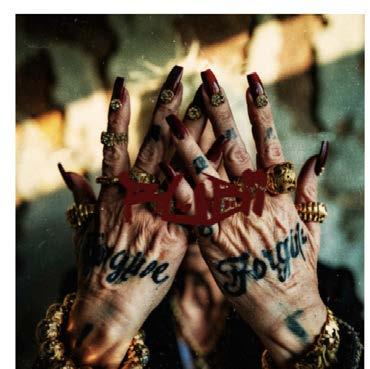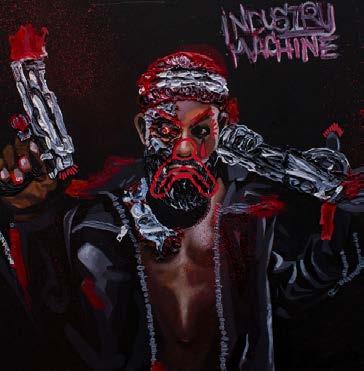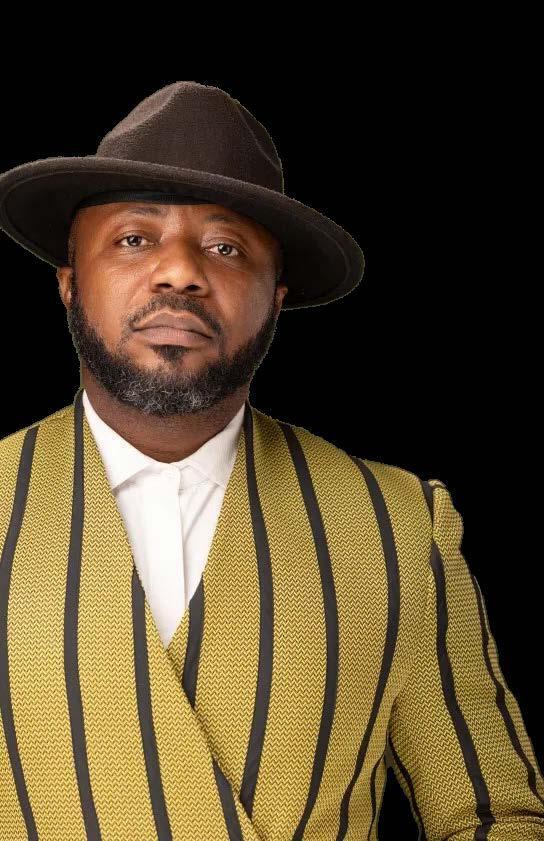
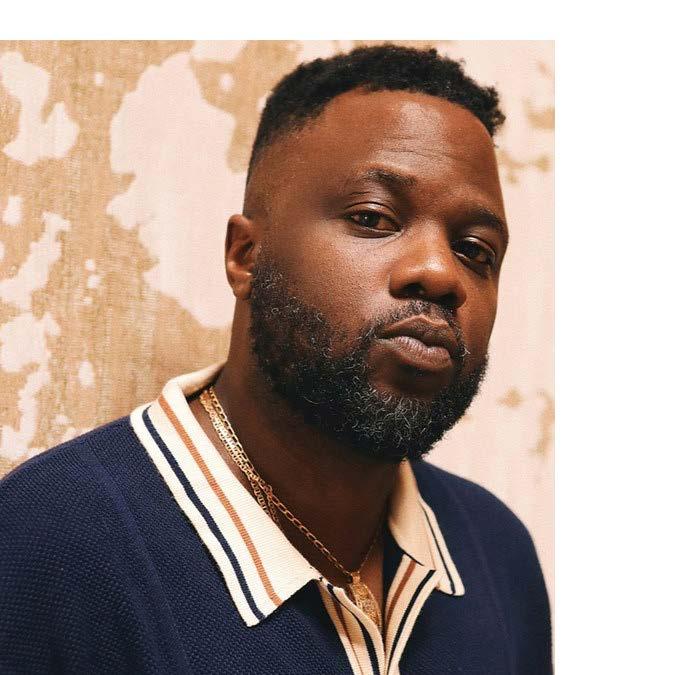

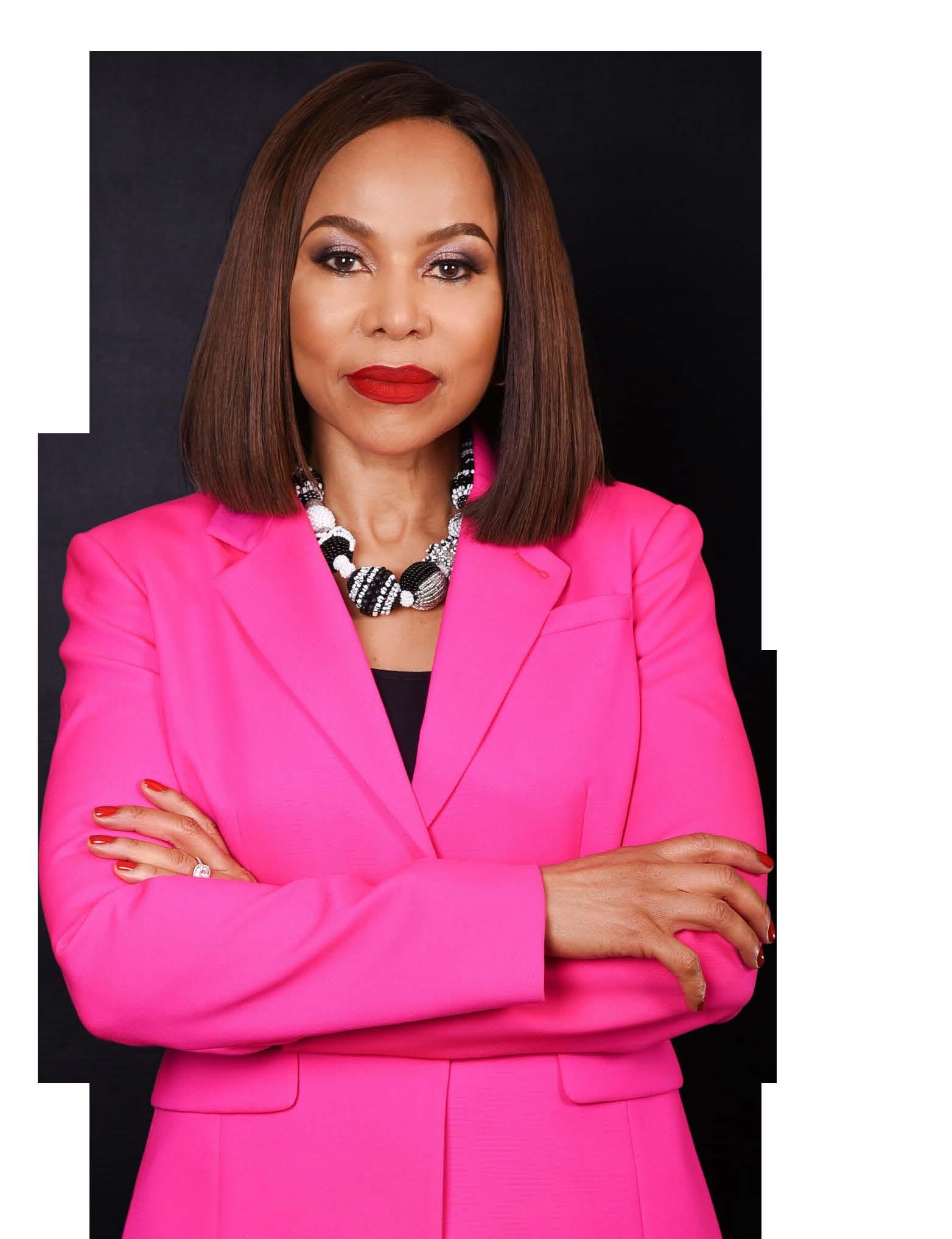
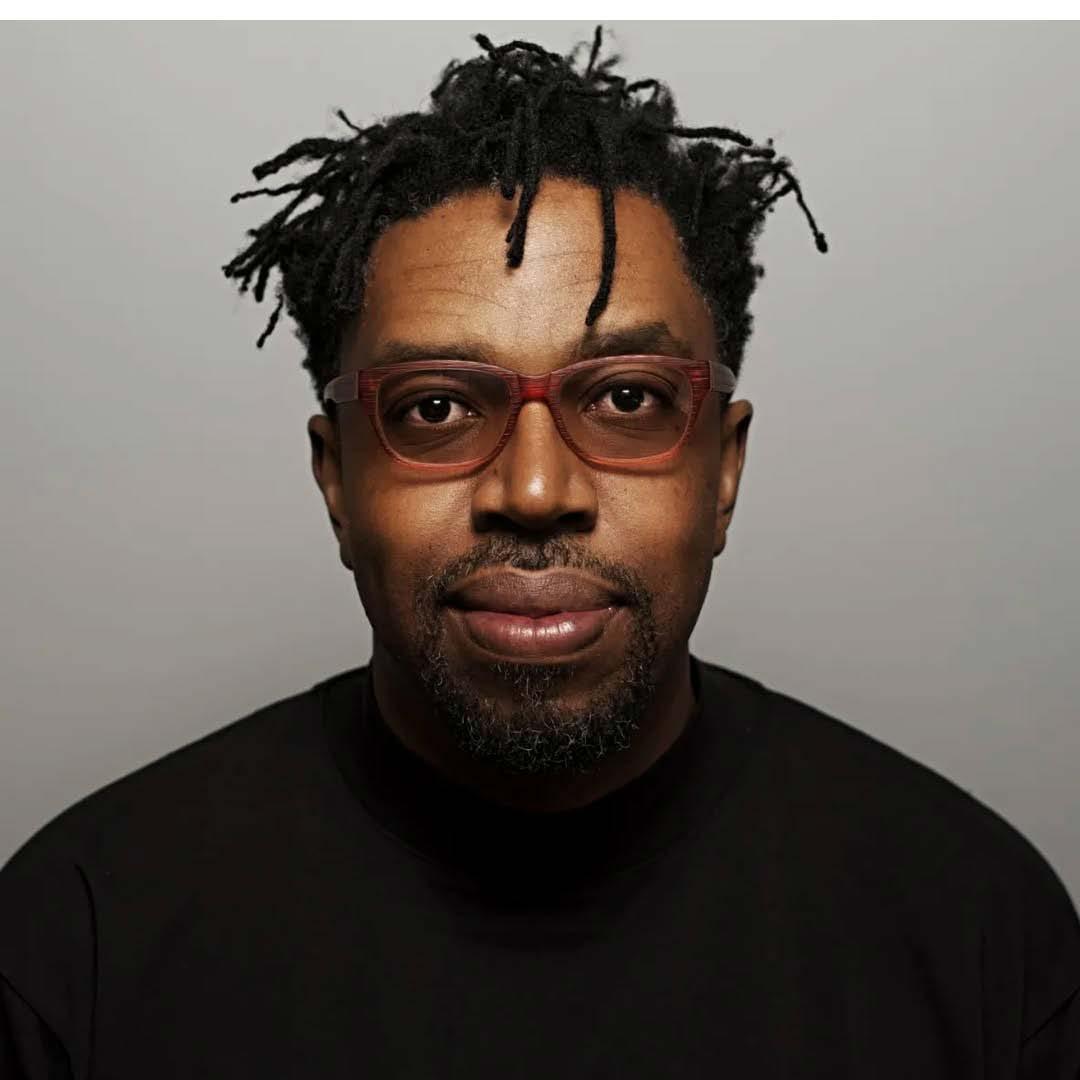

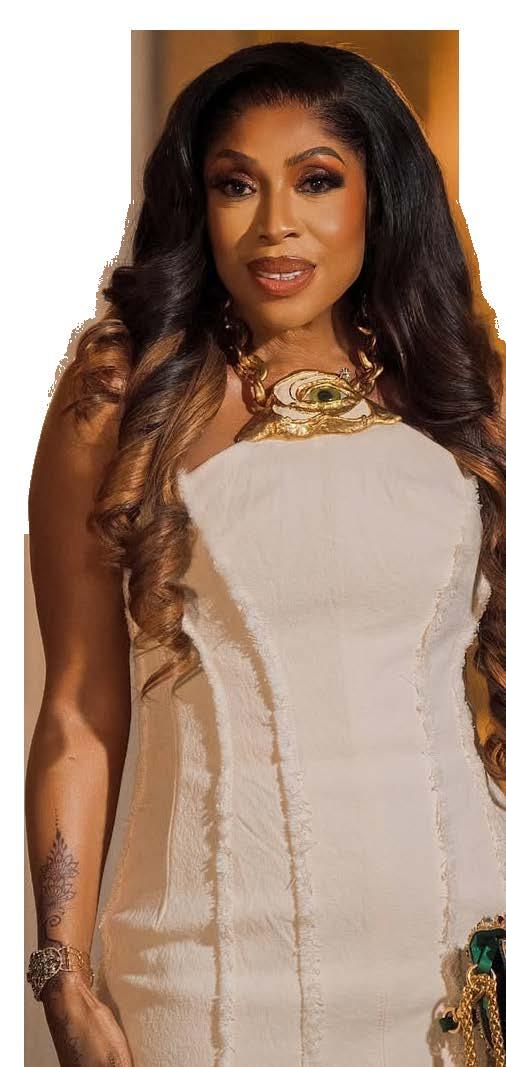








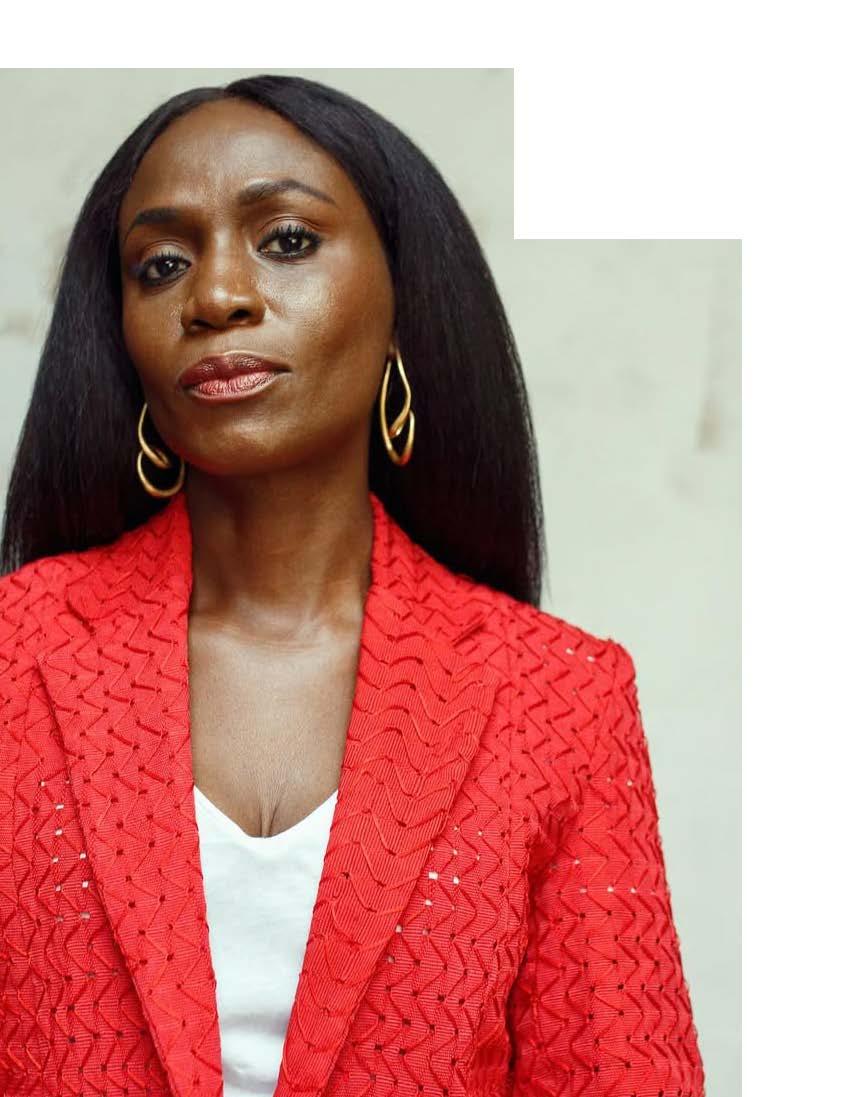
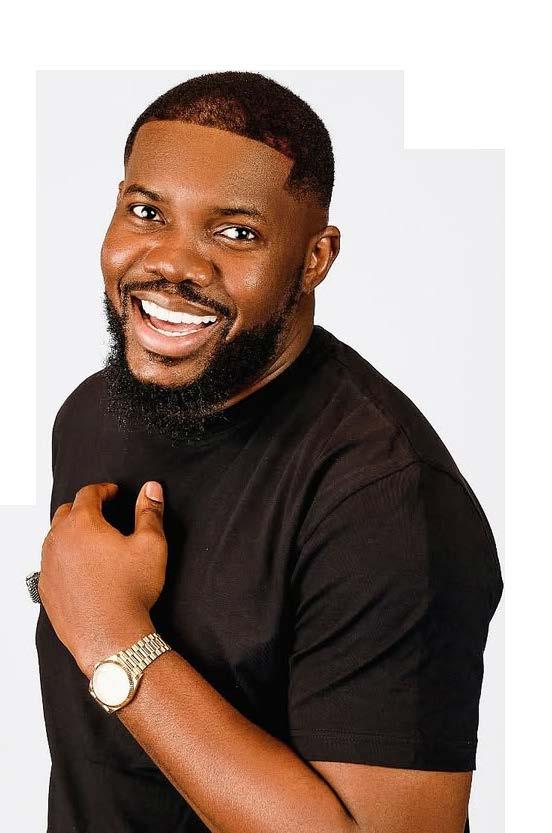
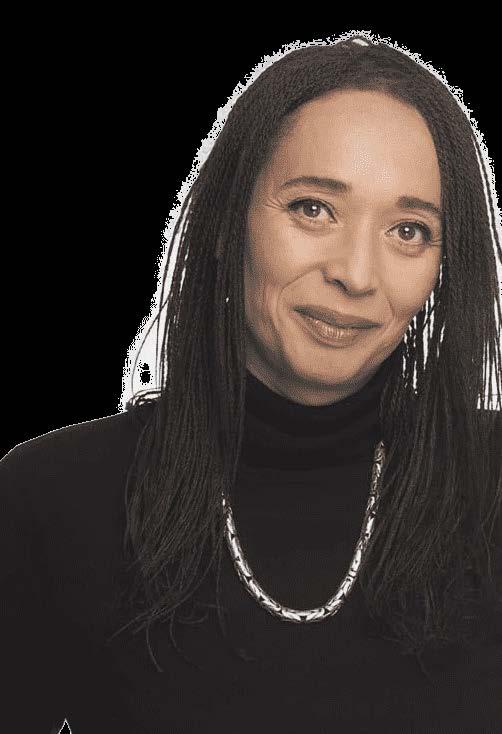




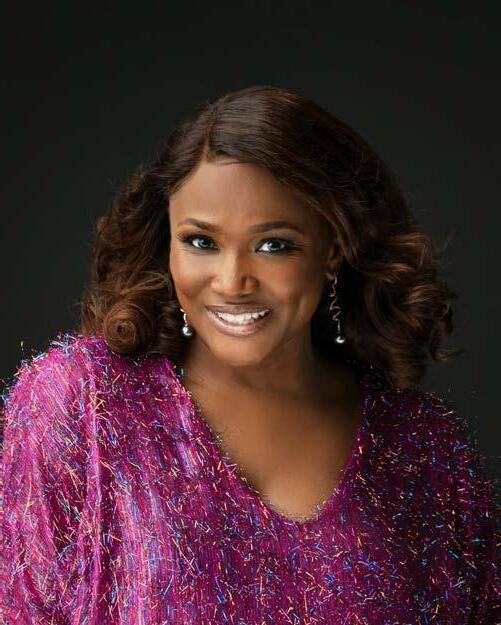
One thing that remains constant across all platforms, from streaming charts to cinematic screens, studios to runways, is that Africa’s creative industries are no longer waiting for validation. The continent is defining global standards through innovation and audacious vision. Behind every Afrobeats anthem, blockbuster film, or viral fashion moment lies someone who saw beyond talent to build structure and systems. Creative entrepreneurs are transforming creativity into a viable enterprise, ensuring it becomes a generational business. The different creative entities are no longer playing small; they are building empires that translate into influence. Africa’s creative economy has entered its golden era, where business acumen fuels artistic expression. The future is for those who can merge creativity with commerce.
Read all about visionaries shaping Africa’s creative economy on pages 8 to 10 of this issue.
Designing your home has gone beyond making it look good. Nowadays, your home should reflect how you feel about your surroundings. This is where dopamine décor comes in. The idea behind this type of décor is to make you feel uplifted and cheerful. Scroll to page 13 to read more about it.
Have you ever had yellow nails? This could be a result of not giving your nails a break between polishes. If you constantly cover your nails with polish, whether gel or acrylics, you may be weakening your nails. Page 12 highlights reasons why you should let your nails breathe between manicures.
Scroll to page 16 to read this week’s movie review and download the playlist curated specially for you.
Until next week, enjoy your read.


@onahluciaa + 2348033239132

AUSTYN OGANNAH
PUBLISHER/EDITOR-IN-CHIEF
Executive Editor: Onah Nwachukwu @onahluciaa
Writer: Johnson Chukwueke
Design & Layout: Olaniyan John ‘Blake’
Digital Media: Oladimeji Balogun
Consulting Art Director: Sunny Hughes ‘SunZA’


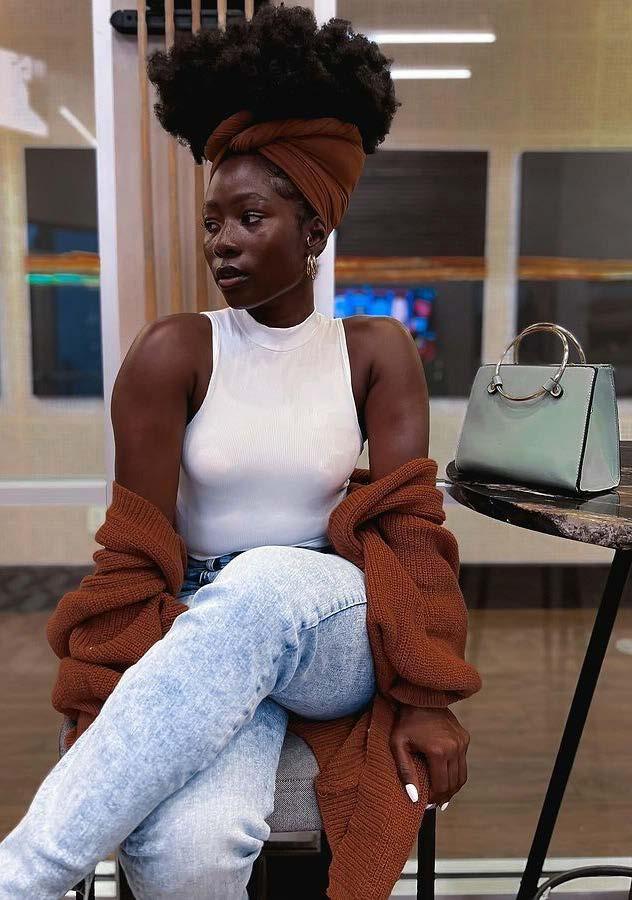




The Scent of Release: Unlearning is the Real Luxury

Boluwatife Adesina @bolugramm
- Contributing Writer
Boluwatife Adesina is a media writer and the helmer of the Downtown Review page. He’s probably in a cinema near you.
Dorcas Akintoye @mila_dfa_ - Contributing Writer
Dorcas Akintoye is a dedicated writer with 5 years prolific experience in writing articles ranging from food, entertainment, fashion and beauty. She loves writing, listening to music and playing scrabble. She is a highly-skilled, enthusiastic, selfmotivated professional writer.
Sally Chiwuzie @unshakable.is.a.state.of.mind
- Contributing Writer
Sally Chiwuzie is a non-practising barrister who owns the brand #Unshakable. She is the author of Silent Symphonies, a fictional love story, and the creator of the podcast Chronicles of #Unshakable Truths.
Ada Obiajunwa @aaddaahh
- Contributing Writer
Ada Obiajunwa writes from Lagos about the big truths tucked inside ordinary moments — friendship, self-discovery, and the quiet revolutions of everyday life. She believes in the power of presence, good banter, and decoding the unsaid. Through her fragrance studio, WhiffWonders, she also crafts scents that weave memory and emotion into experiences that feel like home.

















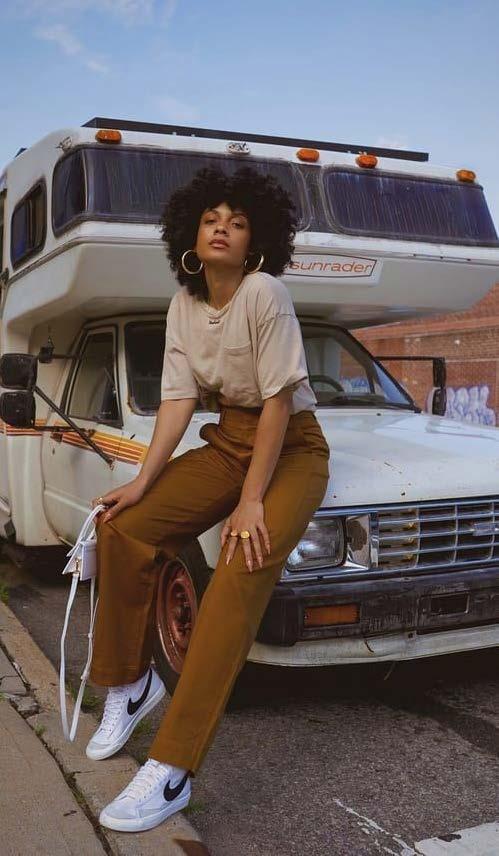
BY DORCAS AKINTOYE
Fashion is one of the biggest areas where impulse buying happens. New trends pop up every week, brands push limited-time sales, and social media makes us feel like we’re missing out if we don’t grab the latest style. An impulse buy, in other words, refers to a sudden purchase made without careful thought. While it feels exciting in the moment, impulse buys often lead to regret. We end up with clothes we don’t wear, shoes that sit in the box, and an empty wallet. In this article, we will show you practical ways to break the habit of impulse buying.
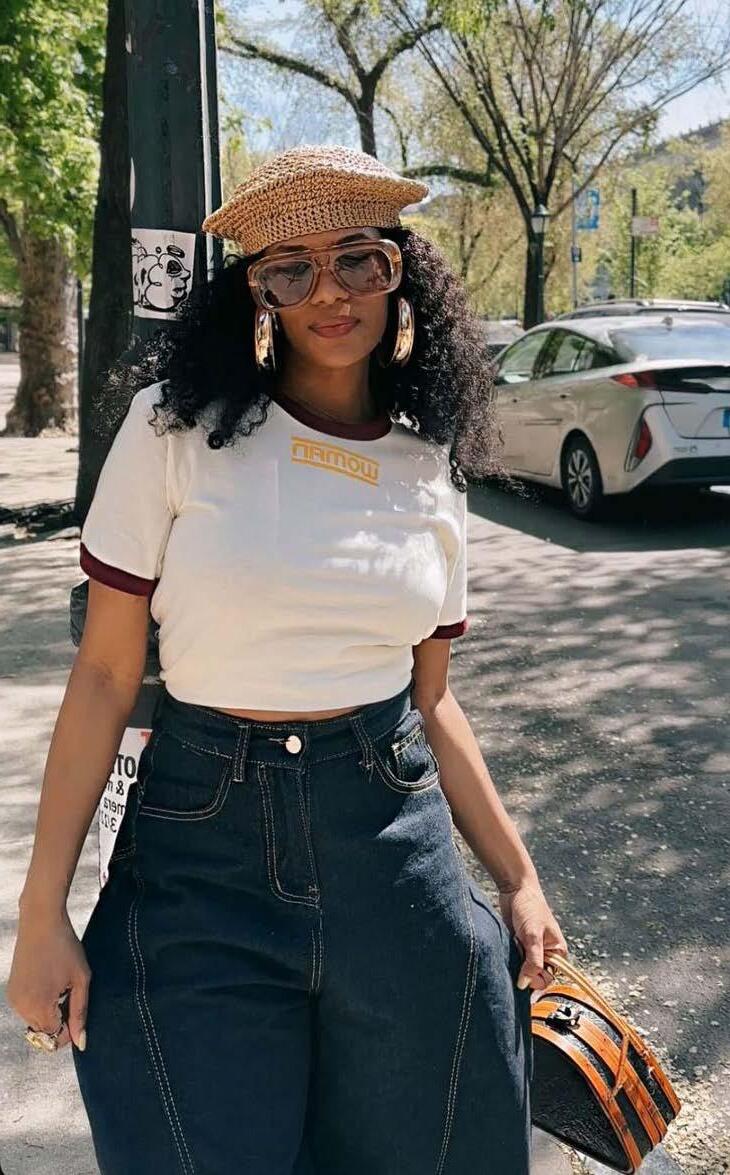
Instead of buying every new piece you see, keep a wishlist of items that actually fit your style. This could be a note on your phone or even a Pinterest board. When you see something you like, add it to the list instead of buying it immediately. This way, you’ll know what pieces you genuinely want and which ones are just passing desires. Over time, you’ll notice that some items on your wishlist lose their appeal, which means they were never worth your money in the first place.
Most impulse fashion buys happen when we’re emotionally stressed, bored, or even too excited. That “feel-good” moment of buying something new often disappears when we realise we didn’t really need it. Before you buy, pause and ask yourself: “Am I buying this because I need it, or because I feel some type of way right now?” If it’s the second option, walk away. Shopping with purpose means you only spend on clothes and accessories that fit your lifestyle, not your mood.
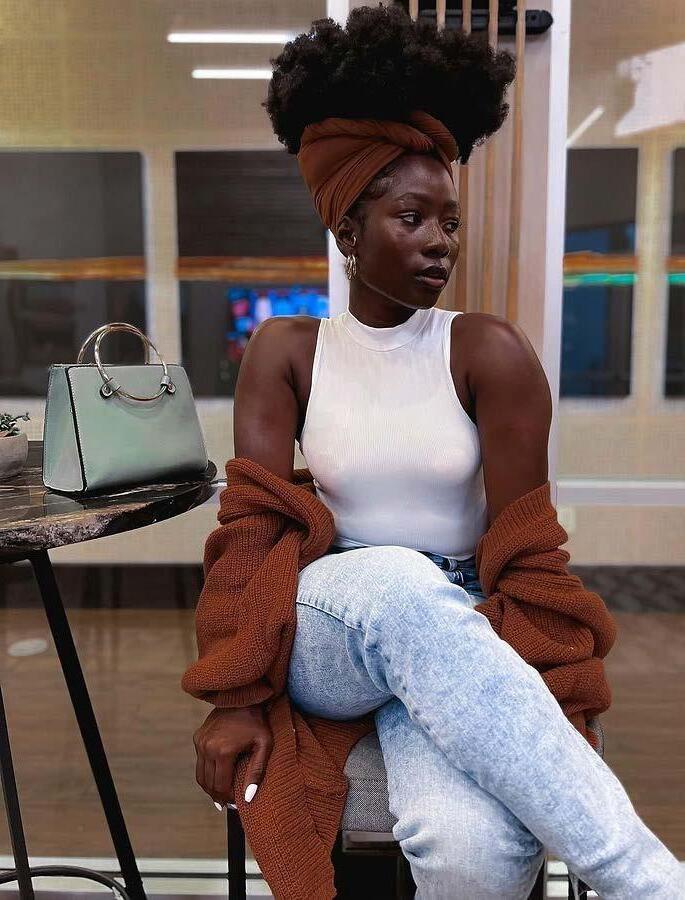
Fashion brands know how to tempt us; flash sales, “limited stock” messages, and discount emails are designed to make you panic-buy. The truth is that most of these “urgent” sales come back around. Don’t let discounts trick you into buying what you don’t need. Train yourself to see sales as opportunities to purchase something from your wishlist, not as an excuse to grab anything cheap.
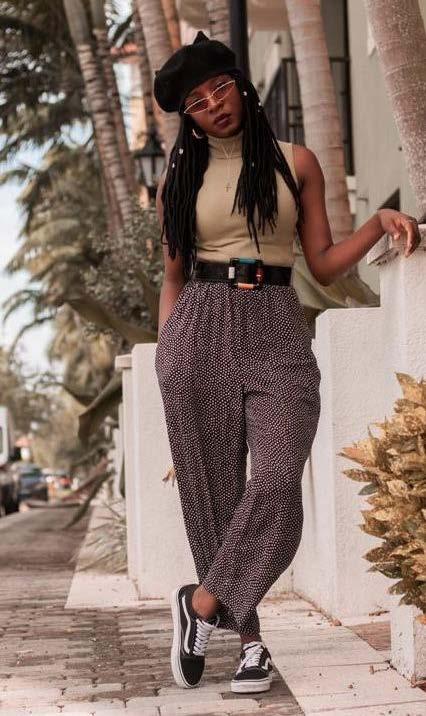
Fashion is fun, but it should never leave you broke. Determine your monthly fashion budget and adhere to it. Divide your budget between essentials (like basics you wear daily) and treats (like statement pieces or accessories). When you have a set limit, you’ll think twice before buying that extra pair of heels or that trendy jacket. It forces you to choose wisely and prioritise quality over quantity.
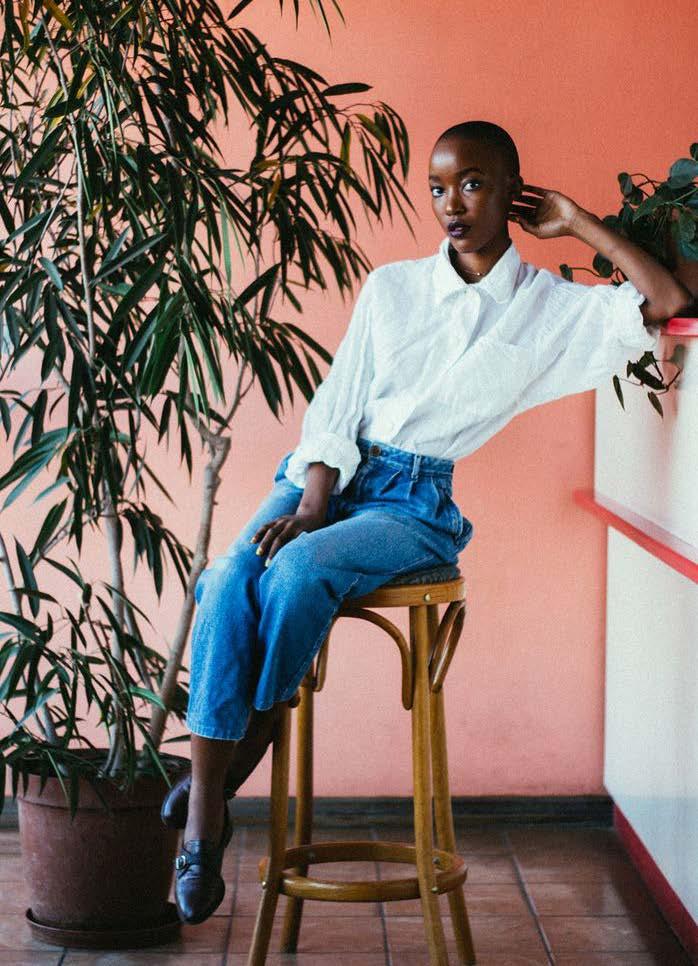
Fashion trends move fast, but your money doesn’t need to move with them. Instead of chasing every hot style, focus on timeless pieces you can wear for years. A goodquality blazer, classic denim, or a versatile handbag will serve you far longer than a micro-trend item you’ll wear once. By choosing longevity over trends, you’ll build a wardrobe that reflects your authentic style, not just what’s popular at the moment.




SALLY CHIWUZIE @unshakable.is.a.state.of.mind
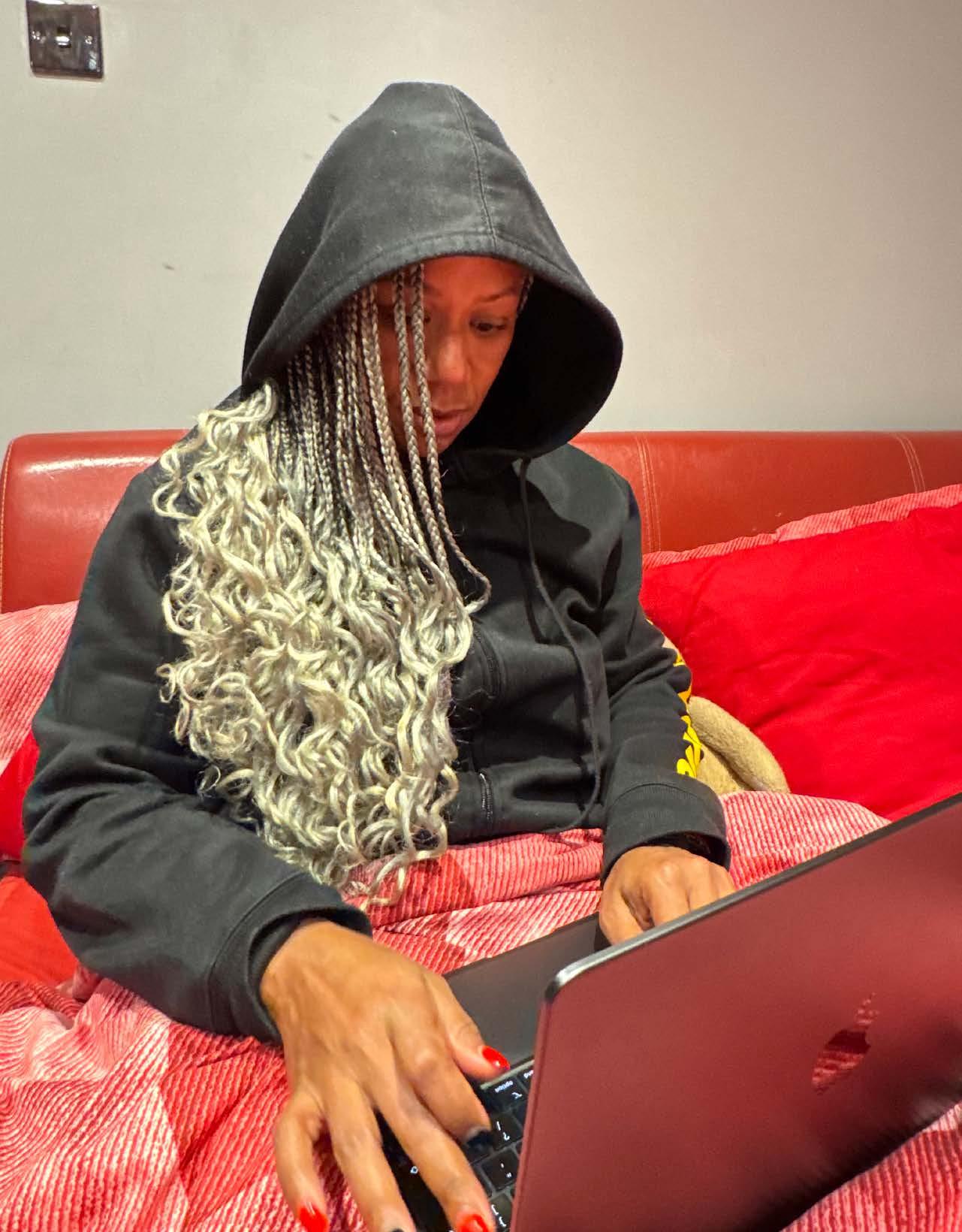
It started as a simple reunion — a handful of childhood friends gathered for lunch, a few flying in from out of town, determined to turn an ordinary afternoon into a boozy one. There was laughter, stories, inside jokes from decades ago, and the easy comfort that only comes with people who knew you when your life was still forming.
Somewhere between the second bottle of rosé and the dessert menu, the conversation drifted toward childhood — our parents, our homes, the lives we came from. One of the girls mentioned her parents were about to celebrate their 50th wedding anniversary. There
were gasps and raised glasses. “Fifty years! That’s half a century. Imagine.”
But that single sentence changed the tone of the table. We began to compare — our generation, the late-forties crowd, the tail end of Gen X — to our parents, the baby boomers. Their marriages, we realised, were built differently. Many of them had stayed together not out of romantic bliss but out of duty. Some of those unions were arranged; others were simply inevitable. You met someone who ticked the right boxes, your families agreed, and you made it work — or you didn’t, but you stayed anyway.
They would often say they “did it for the sake of the kids.”
We all nodded because we had been those kids. We remembered the arguments muffled behind closed doors, the long silences at dinner, the tense holidays where smiles were rehearsed for the camera. We grew up in homes that were stable but not always peaceful, where endurance was praised but emotional connection was optional.
One of us, the most

outspoken of the group, said what we were all thinking. “Honestly, we would have been better off with two happy single parents than two miserable married ones.”
It was a bold statement, but it hit home.
Another disagreed gently. “Maybe. But there’s something to be said for security. At least they stayed. We didn’t have to pack bags every weekend or divide holidays. We always came home to both of them. Even if they weren’t exactly happy, they were there.”
And that was the rhythm of the afternoon — reflections and rebuttals, laughter and memories, as we realised there were no neat conclusions. For every friend who felt her parents’ marriage had harmed her view of love, there was another who felt their endurance had shaped her sense of loyalty. For every child of divorce who grew up stronger for it, another still carried the ache of instability.
The truth, we agreed, is that there is no single formula for family. Every story is its own ecosystem. Some marriages deserved to end; some divorces were necessary. Others survived the hard years and eventually found peace. Someone else chimed in, “Maybe that’s the difference between them and us. They were taught to stay; we were taught to feel. They prioritised duty; we prioritise happiness.”
We fell silent for a moment, considering it. Because neither side has it completely right. Their generation endured too much. Ours, perhaps, gives up too soon. They stayed even when they shouldn’t have; we sometimes leave before we should. Maybe wisdom lies somewhere in between.
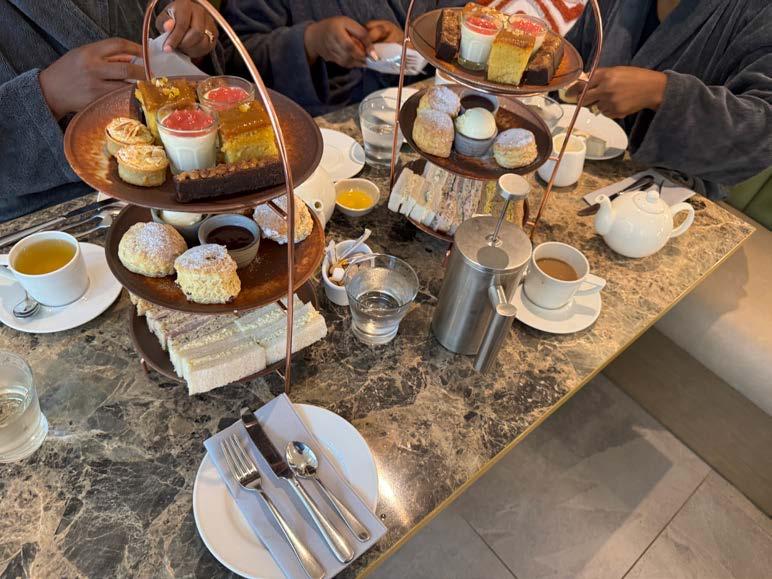
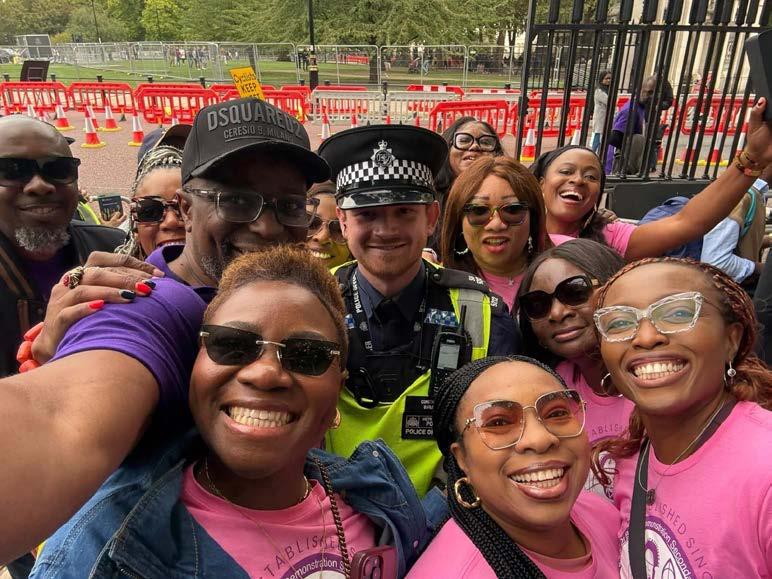
As the sun began to dip, we raised our glasses again — not to perfection, but to perspective. We toasted our parents, in all their contradictions, for trying in the only ways they knew how. We toasted ourselves for learning to speak about what they couldn’t. And we toasted the children who remain — the ones still unpacking what it means to have grown up in homes that were either too silent or too loud, too together or too apart.
Every generation rewrites the rules, but love remains an experiment, never a science.
And perhaps this is the #Unshakable truth: that there is no one right way to love, to leave, or to stay. Every family carries its own story, its own scars, its own strength. What matters is not how long the marriage lasted, but what kind of peace it left behind.
‘See’ you next week.
BY JOHNSON CHUKWUEKE
Aknownfact? Africa’s creative economy is booming. An economy that has become a symphony of rhythm, style, and storytelling that has gone far beyond its borders. From Lagos to Johannesburg, Accra to Nairobi, a new generation of cultural entrepreneurs is reshaping how the world sees Africa, not just as a source of raw talent, but as a hub of world-class creativity and business excellence.
This isn’t just about the music that fills the charts, the fashion that turns heads, or the movies that capture global audiences. It’s about the architects behind the scenes — the sharp minds turning artistic passion into sustainable enterprises. These are the executives, founders, and visionaries who understand that talent alone isn’t enough; business strategy, innovation, and global vision are what turn creative sparks into global movements.
In music, the African sound has become a global language, with powerhouses transforming talent into transcendent brands and bridging the gap between continents, proving that African leadership is as exportable as its artistry.
In film, African storytellers are backed by production minds who understand the delicate dance between art and commerce, pushing Nollywood and other African industries into new eras of global relevance. Meanwhile, African fashion continues to rise, driven by visionary designers and brand builders whose work celebrates the continent’s cultural richness while redefining luxury on their own terms. We take a deep dive into the business of creativity, where innovation meets culture, and where the new moguls of African entertainment are proving that passion and profit can indeed coexist beautifully.
Muyiwa Awoniyi is the man who helped transform Tems from a promising Nigerian singer into one of the most globally recognised voices of this generation. As the co-founder of The Leading Vibe Ltd., a management and creative company he established alongside Tems, Muyiwa’s entrepreneurial instincts go beyond traditional artist management. He has built a brand that represents intentional artistry, global relevance, and African excellence.
Under his watch, Tems has seamlessly crossed borders, from local success in Lagos to Grammy-winning global acclaim, all while maintaining authenticity. Muyiwa’s approach to business centres around structure, strategy, and sustainability. He understands the balance between art and enterprise, ensuring that every creative decision aligns with long-term brand growth.
Beyond Tems, he’s become an emerging voice in Africa’s entertainment business ecosystem, advocating for better artist representation, smarter contracts, and innovation-driven management. His vision is clear: to create a generation of African artists who not only perform on the world stage but also own their narratives and enterprises. Muyiwa Awoniyi is not just managing a superstar; he’s building a movement that’s redefining what it means to be a creative entrepreneur in African music.
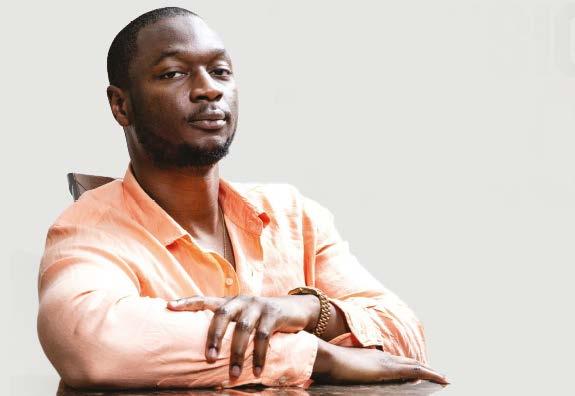
When it comes to defining the modern Nigerian music business, Tega Oghenejobo, popularly known as Tega Mavin, stands tall as one of the industry’s sharpest executives. As the President and Chief Operating Officer (COO) of Mavin Records, Tega’s vision transcends just music — it’s about building a brand that’s global, structured, and sustainable. Mavin, founded by Don Jazzy, has evolved from a hit-making label into a full-fledged entertainment company with a global presence. And much of that success can be credited to Tega’s leadership. Under his watch, Mavin has developed a distinct operational model that prioritises artist development, brand partnerships, and digital strategy. He’s turned Mavin into more than a label — it’s a culture engine powering Afrobeats’ global rise.
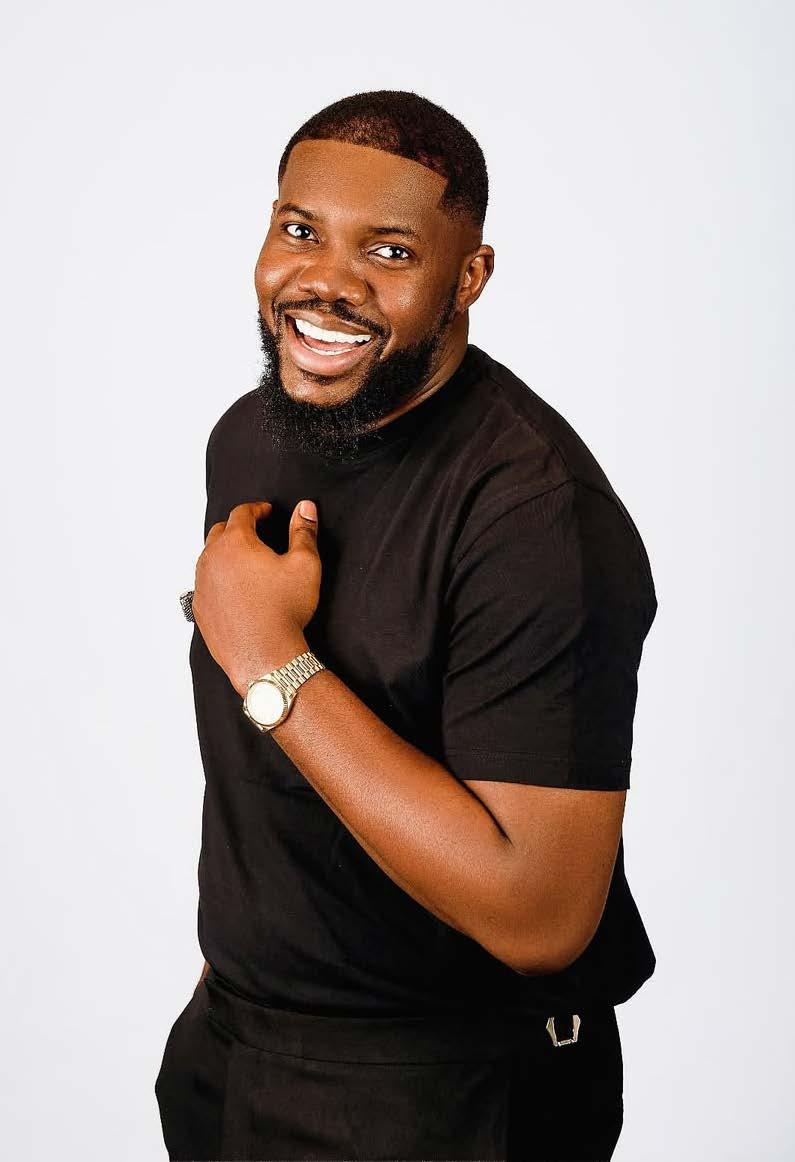
Tega’s business acumen lies in creating systems that allow artists like Ayra Starr, Rema, Ladipoe, and Crayon to flourish while maintaining Mavin’s creative integrity. He’s also a firm believer in collaboration, working with international distributors and forging partnerships that position Mavin as Africa’s blueprint for the future of record labels. From negotiating international deals to driving marketing innovation, Tega has proven that behind every chart-topping Afrobeats hit is a business mind shaping the sound and strategy of a new generation
When conversations about Afrobeats’ global takeover come up, one name that quietly but powerfully resonates behind the scenes is Tunji Balogun — the Nigerian-American music executive who’s reshaping how the world hears and experiences African sound. Currently the CEO of Def Jam Recordings, one of the most influential music labels in the world, Tunji is a force connecting Africa’s sonic soul to international airwaves.
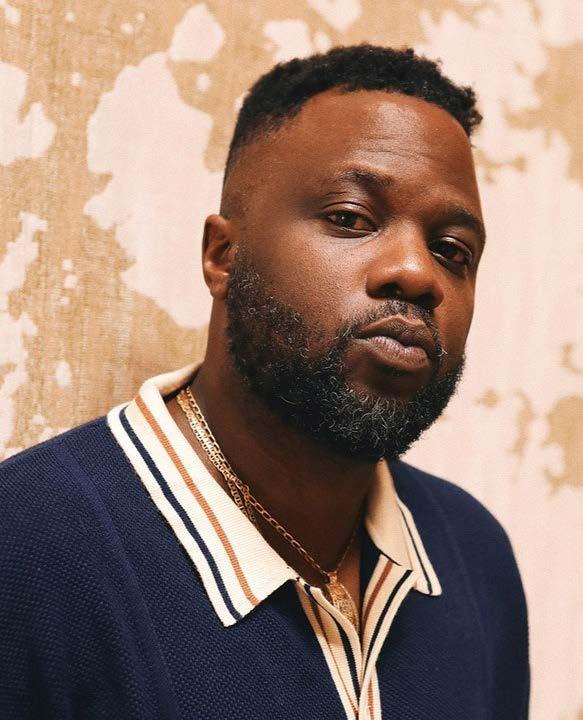
Before stepping into his Def Jam role, Tunji had already made his mark as an A&R executive at RCA Records, where he played an instrumental role in signing and developing global superstars like Khalid, Bryson Tiller, and H.E.R. But it’s his deep connection to African music, his heritage and understanding of the Afrobeats movement, that positioned him as a bridge between continents. Under his leadership, there’s been a growing synergy between African artists and major U.S. labels, ensuring that African music isn’t just trending but thriving on its own terms. Balogun’s genius lies in his ability to merge business precision with cultural intuition. He recognises the rhythm of the streets and the potential of sound as exportable art. With him at the helm, the Afrobeats wave is not just a moment; it’s a movement with structure, sustainability, and global strategy. Tunji Balogun is proof that the future of African music doesn’t just sound good, it’s in very capable hands.
Mo Abudu stands as one of Africa’s most influential media entrepreneurs, a visionary whose impact has reshaped storytelling across the continent. As the founder and CEO of EbonyLife Media, Abudu has created a world-class content empire that has placed Nigeria squarely on the global entertainment map. Her productions, from The Wedding Party to Oloture and Elesin Oba — have captured audiences far beyond Africa, breaking streaming records and landing coveted spots on global platforms like Netflix. But Abudu’s brilliance extends far beyond creative direction, it’s rooted in strategic business thinking. EbonyLife isn’t just a production house; it’s a multimedia ecosystem spanning television, film, and now an academy nurturing young African storytellers. She has mastered the art of merging business with culture, negotiating partnerships with international giants such as Netflix, Sony Pictures, and BBC. For Abudu, storytelling is more than entertainment; it’s a vehicle for rebranding Africa and creating generational wealth. Her influence continues to set a golden standard for what African media entrepreneurship can achieve.
As the current CEO of Showmax and the former CEO of MultiChoice Africa, Yolisa Phahle has been at the forefront of Africa’s entertainment revolution. A British-born South African with a background in music and television, Yolisa embodies innovation, adaptability, and leadership in an industry evolving faster than ever.
Her work has centred around transforming how Africans experience content, making it more local, accessible, and relatable. Under her watch, Showmax has evolved from a regional streaming platform into a continental powerhouse, boldly competing with global giants like Netflix and Amazon Prime. By pushing for homegrown stories and investing heavily in African originals, Yolisa has helped redefine Africa’s narrative on screen.
Yolisa’s approach to leadership is as dynamic as her background, blending artistic passion with corporate precision. She champions diversity and creativity, ensuring that African talent is not only showcased but also empowered. Through her vision, Showmax has become more than a streaming service; it’s a stage for African excellence.
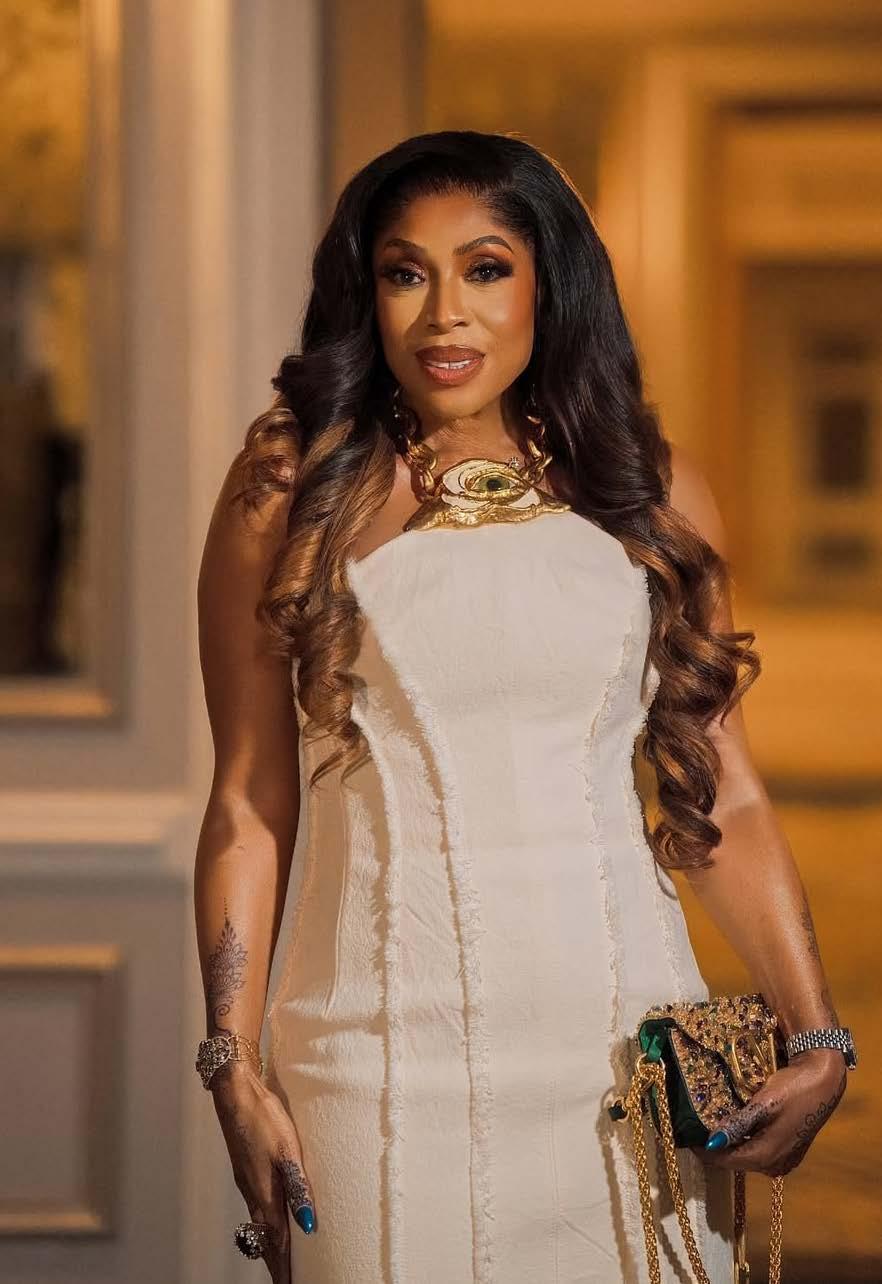

South African filmmaker, comedian, and entrepreneur Kagiso Lediga has built a name synonymous with wit, creativity, and bold storytelling. As the founder of Diprente Films, Kagiso has carved out a space for unapologetically African stories told through a lens that’s both globally relevant and authentically local. His filmography, from the critically acclaimed Catching Feelings to the Netflix hit Queen Sono, shows his range and his ability to merge humour, intellect, and social commentary in ways that challenge conventions. But beyond directing and producing, Kagiso has proven to be a smart
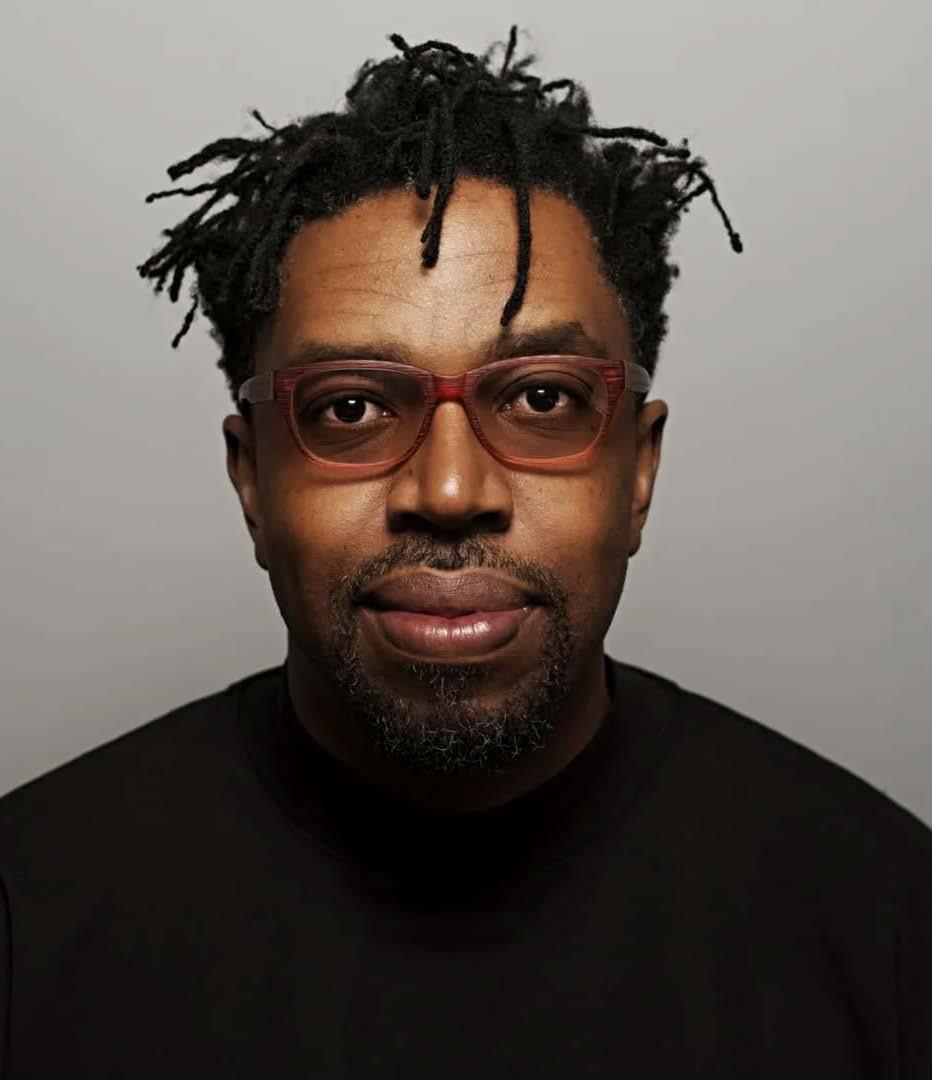
businessman. Diprente Films isn’t just a production company; it’s a cultural brand representing the evolution of African storytelling. Kagiso’s work demonstrates how African creatives can own their narratives and build sustainable business models around them. His partnership with global streaming platforms has positioned Diprente as a bridge between African creativity and the international market, making him one of the key voices in the continent’s entertainment entrepreneurship landscape.
Omoyemi Akerele stands as one of the most influential forces shaping the narrative of African fashion on a global scale. As the Founder and Executive Director of Lagos Fashion Week and Style House Files, she has transformed what began as a local fashion showcase into an international movement. Through her visionary leadership, Lagos Fashion Week has evolved into a platform that not only celebrates creativity but also nurtures the business of fashion globally. With a background in law and image consulting, Akerele recognised early the need for structure and sustainability in Nigeria’s burgeoning fashion industry. Her work bridges the gap between design and commerce — helping designers understand global market demands while staying rooted in cultural authenticity. Under her guidance, Lagos Fashion Week has championed ethical fashion, sustainability, and craftsmanship, attracting global media, buyers, and investors. Beyond the runway, Akerele’s Style House Files — a fashion business development agency — provides mentorship, visibility, and access to global retail opportunities for emerging African designers. From connecting brands like Lisa Folawiyo and Orange Culture to international stockists, to championing circular fashion, her impact continues to resonate far beyond the catwalk.
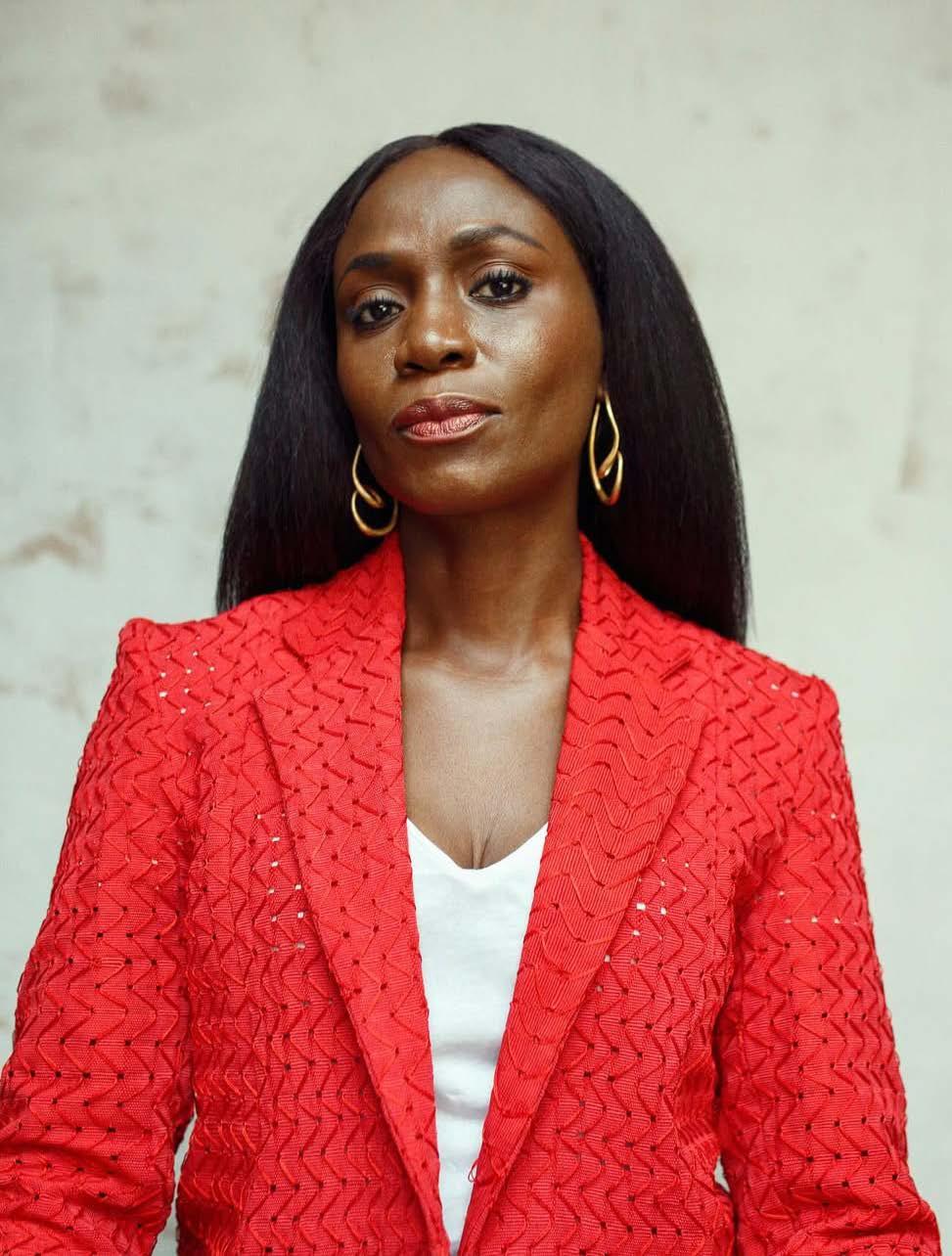
in purpose and sustainability, ensuring that every success story creates ripple effects within communities.
Dr. MoloiMotsepe’s influence has not gone unnoticed internationally. Her presence at global fashion forums, partnerships with sustainabilitydriven brands, and recognition among Africa’s top women leaders underscore her commitment to redefining Africa’s image, not as a follower of trends, but as a trendsetter in global style and innovation.
A visionary at the intersection of fashion, business, and philanthropy, Dr. Precious Moloi-Motsepe continues to prove that African excellence is not emerging; it’s already here.
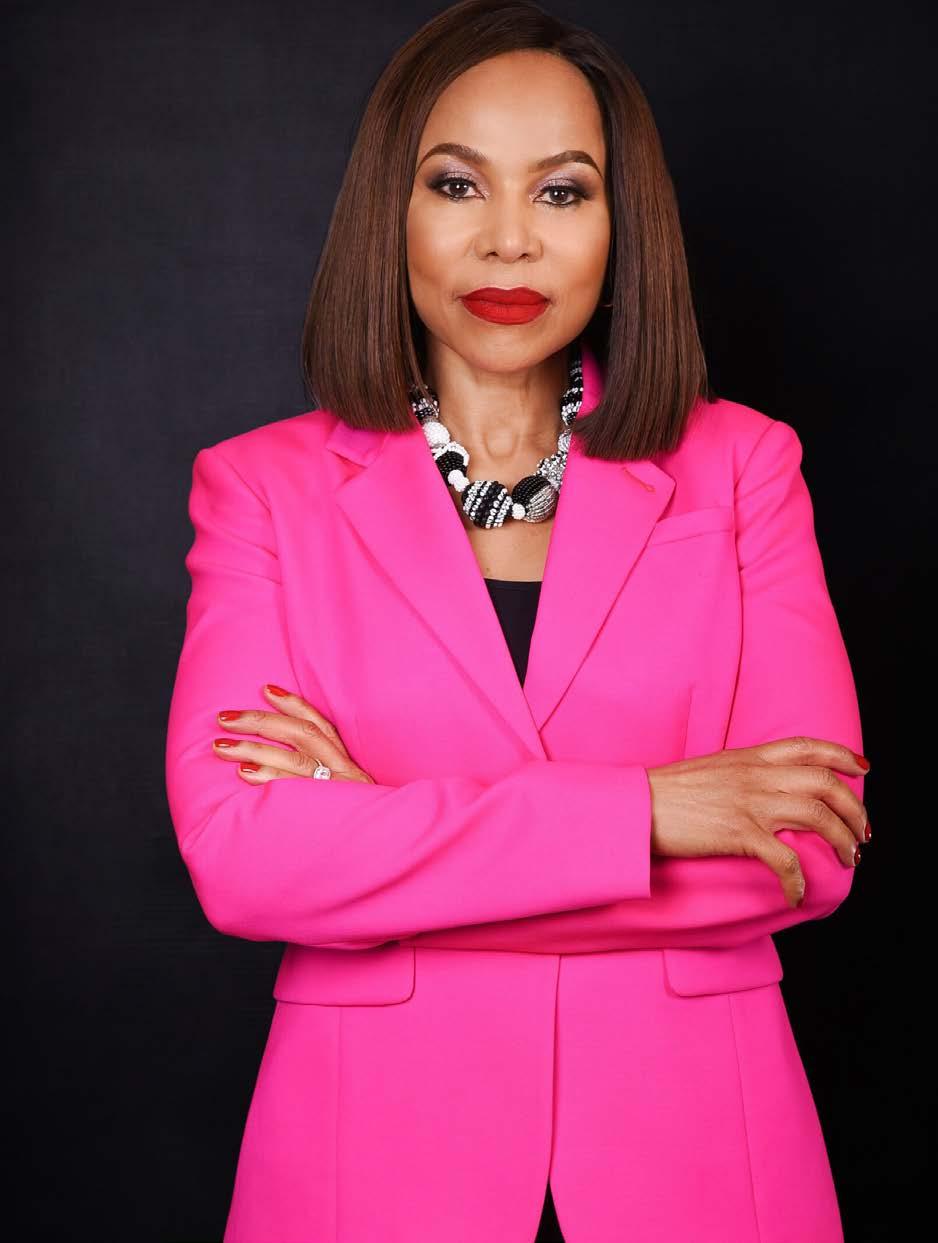
Kola Oshalusi is one of Nigeria’s leading photography entrepreneurs, combining artistry, business acumen, and vision to reshape how creative content is seen and valued across Africa.
In Omoyemi’s world, fashion is more than aesthetics — it’s a vehicle for economic empowerment and cultural storytelling. She isn’t just curating shows; she’s architecting a future where African fashion commands its rightful place on the world stage.
Dr. Precious Moloi-Motsepe stands as one of Africa’s most influential women, seamlessly blending her roles as a medical doctor, philanthropist, and the driving force behind African fashion’s global rise. As the founder of African Fashion International (AFI), she has dedicated herself to positioning African designers on the world stage— bridging the gap between local creativity and international luxury. With an eye for elegance and a deep understanding of cultural identity, Dr. Moloi-Motsepe’s work has transformed AFI’s platforms, including Cape Town and Johannesburg Fashion Week, into gateways for emerging designers to access global markets. Her vision goes beyond aesthetics—it’s about economic empowerment, gender inclusion, and rewriting the narrative of what African luxury truly means. Beyond fashion, she co-chairs the Motsepe Foundation, which channels vast resources into health, education, and women’s empowerment initiatives across the continent. Her approach to leadership is rooted
As Creative Director of Insigna Media, his visual storytelling transcends simple frames; his works across events, fashion, lifestyle, and advertising capture emotion with clarity, style, and authenticity. Born with a science-mindset, his early academic background in medical laboratory and computing equipped him with discipline and technical thinking, qualities that now feed into his photographic precision. What began largely as a selftaught skill, sharpened through short courses and observing other creatives, has grown into an influential career. Oshalusi’s ambition didn’t stop at being behind the lens. Recognising a gap in how creatives operate, he founded the Business of Photography Conference (BOP) — a gathering that aims to raise the bar for photography’s business side in Nigeria. Through BOP, emerging photographers gain training, mentorship, exposure, and networking. He’s spoken often about how many photographers are “fantastically creative but terrible business people,” and he’s working to change that. His published works have crossed borders and platforms, speaking to both local and global audiences. But perhaps most impactful is how he builds teams and invests in the next generation — his creative people network is as much part of his legacy as any iconic photograph. In the shifting landscape of African visual culture, Kola Oshalusi is not just capturing moments; he’s building institutions.

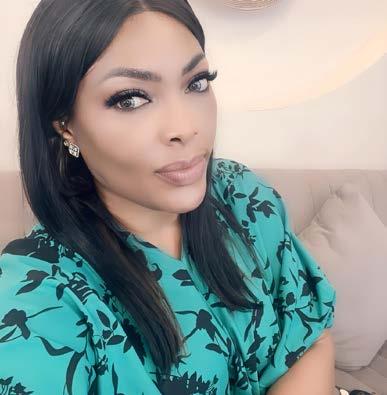
@aaddaahh
“Unlearning isn’t forgetting; it’s remembering differently.”
Iused to say something in ignorance: “I hate curiosity, because curiosity kills the cat.” But curiosity didn’t kill the cat – it gave her nine lives. I just didn’t know that back then.
And when people reminded me that cats have nine lives, I’d quickly reply: “I’m not interested in losing even one.” What an ignorant statement. If I ever told you that in those younger years, abeg no vex — I’ve grown from that.
At the time, I thought curiosity was dangerous — an invitation to stress myself unnecessarily. Lagos was already stressful. Life was already stressful. So why add more wahala by being curious? Why volunteer to complicate my life with amebo and extra learning?
Reading was already a struggle because of dyslexia, so after law school, I made a vow: no more stress. If I couldn’t learn it on the job or through everyday life, I didn’t want it. What I already knew was enough. Or so I thought.
Now I see how wrong that was. Life is too full to be lived on repeat. Why keep doing the same thing over and over again when there are new ways waiting?
Learning is not just survival — it’s how you taste life.
And unlearning? That’s how you make space for the new taste.
For years, people around me prided themselves on knowing every shortcut by heart — no GPS, no Google Maps, just instinct and danfo wisdom. I admired it, but for me, it was impossible. Dyslexia never allowed me to trust directions. I was the friend who would call you for directions to your own house — the same house I had visited the day before.
I thought it meant I was disadvantaged for life. Until Google Maps came along. Suddenly, my “weakness” wasn’t weakness anymore — it was just a different way of navigating.
Even today, I still need to pretend to write with my right hand just to know left from right. Born and bred in Lagos, yet I still use Google Maps everywhere. People laugh, I laugh too. Lagos roads, or any road, may not be my strength. But resourcefulness? That one, I’ve mastered.
That’s what unlearning feels like. It’s letting go of the shame of “not knowing” and embracing the tools that make life fuller and easier.
We love to celebrate learning — degrees, certificates, LinkedIn courses. We add and add until our shelves are heavy. But unlearning? That’s harder. It feels like loss. It feels like betrayal of the old ways. Yet it is freedom.
Learning fills your cup. Unlearning empties it — so you have space for what’s next. Both are survival tools. Both are luxury silk. My generation grew up believing endurance was success. Work late. Delay joy. Save it for “later” — after the house, after the children’s school fees, after retirement. But sometimes, “later” never comes. And when it does, joy feels like an afterthought.
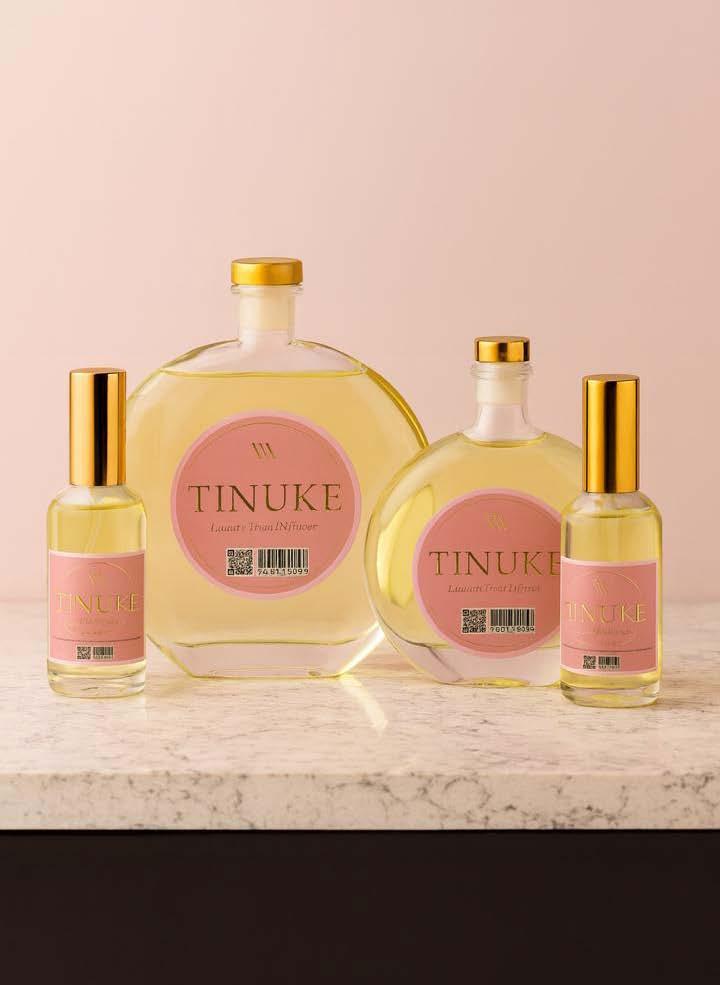
Unlearning doesn’t mean despising the old. It means holding it with gratitude and still saying: “It’s time to release.” Because sometimes the things you’ve held onto all your life turn out to be indoctrination — hand-me-down scripts from parents, teachers, society.
Think about it:
• We unlearn that curiosity is dangerous. It’s actually the doorway to discovery.
• We unlearn that keeping quiet equals wisdom. Sometimes, silence is the chain.
• We unlearn that staying in one career path equals loyalty. Sometimes, it equals stagnation.
• We unlearn that Lagos chaos is only suffering. Sometimes, it’s theatre, comedy, even connection.

weakness. Sometimes, it’s power. • We unlearn that joy must be delayed. Sometimes it must be claimed now.
Unlearning isn’t weakness. It’s strength. It’s the humility to admit that yesterday’s answers might be today’s chains.
For me, unlearning often shows up in the softest ways. Like when I get home after a long Lagos day and open the door to my room. The first thing that greets me is my TINUKE Luxury Reed Diffuser from WhiffWonders — fast becoming my favourite fragrance. It’s already there, waiting, shifting the air before I even drop my bag.
• We unlearn that rest is laziness. Sometimes, it’s wisdom
• We unlearn that forgiveness is

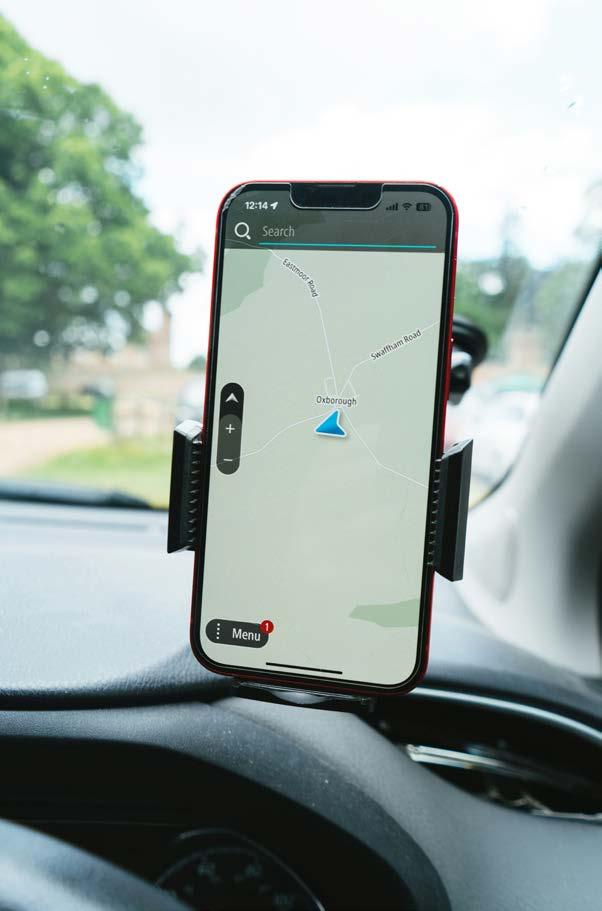
And then, I reach for my TINUKE Room + Linen fragrance. I spritz it on my duvet covers, my curtains, even the sheets. One mist, and the air shifts again. The heaviness of the day dissolves — the conversations, the pressures, even the things I didn’t get right.
That’s what unlearning feels like. Clearing out what no longer serves, making space for something softer. A reset. TINUKE doesn’t just scent the room. It rewrites the air, like unlearning rewrites the self.
It isn’t about erasing the past. It’s about freshening the present, so you can finally breathe again because some scents fade into the room.
But Tinuke? Tinuke becomes the room.
The truth is this: life is not just about what we add. It’s also about what we release. And sometimes, the bravest thing you can do is not to learn one more thing — but to unlearn one old thing.
Because space — in your mind, your heart, your life — that is the real luxury silk.
Unlearning is not forgetting. It’s remembering differently.
BY DORCAS AKINTOYE
We all love the look of freshly polished nails, whether it’s a glossy nude, a bold red, or an eye-catching design. However, just like your skin and hair need breaks from heavy products, your nails also need some time off from constant manicures. If you’re always covering your nails with polish, acrylics, or gel, you might be unknowingly weakening them. Allowing your nails to “breathe” simply means giving them a polish-free break so they can rest, recover, and stay healthy. Here, we show you five important reasons why you should let your nails breathe between manicures.
PREVENT WEAK AND BRITTLE NAILS
Constantly applying polish and removing it with acetone or harsh nail removers can strip your nails of their natural oils. Over time, this causes them to become dry, thin, and prone to breakage. If you’ve ever noticed your nails peeling or snapping easily, it’s likely because they’re not getting enough rest. Taking a short break, say one or two weeks, gives your nails time to restore their natural strength and thickness.
KEEP NAILS FROM YELLOWING
Do your nails sometimes look yellowish after removing polish? That’s because dark-colored nail polishes and gels can stain the nail bed. Without a break, the discolouration gets worse over time. By letting your nails stay bare occasionally, you allow them to clear up naturally. You can also use this break to apply nourishing oils or lemon juice treatments to restore their natural pinkish tone. Healthy nails look better, even without polish.
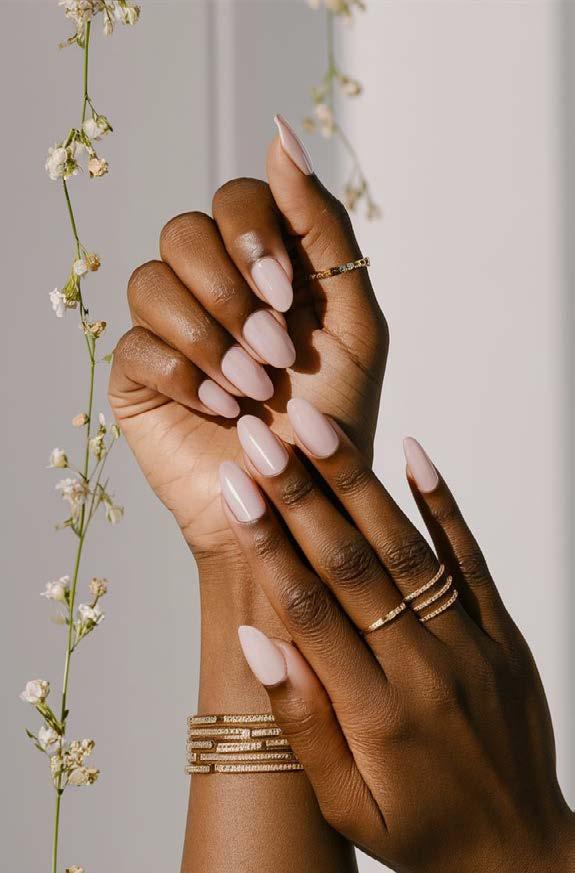
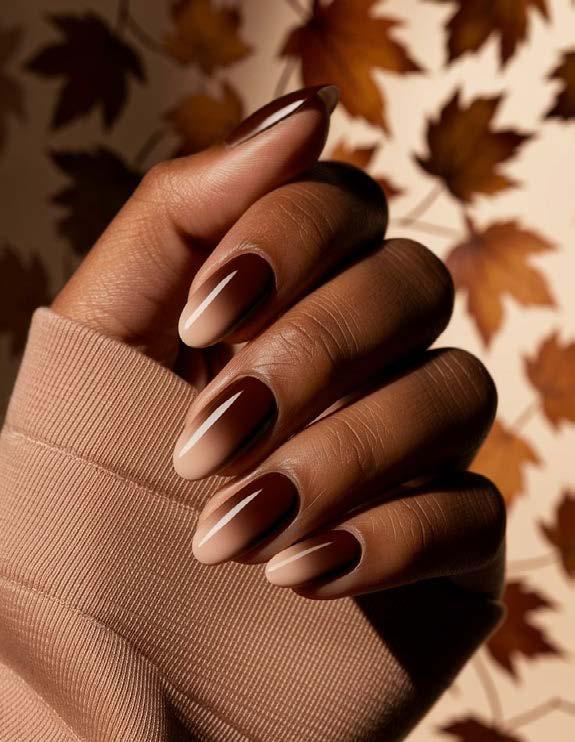
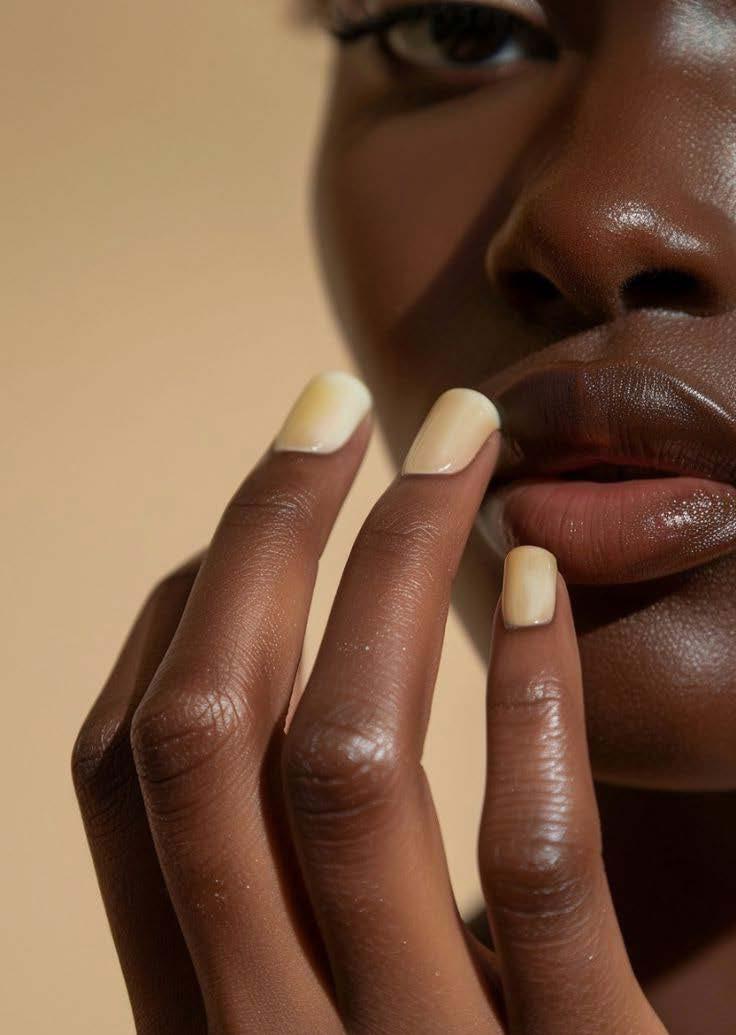
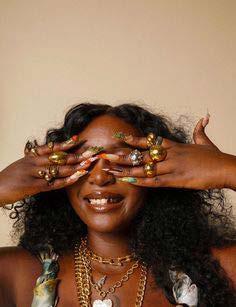
When nails are always covered, especially with acrylics or gels, it’s easy for moisture to get trapped underneath. This creates an ideal environment for bacteria and fungi to thrive, leading to infections. Sometimes, you won’t even notice the damage until it’s too late. Allowing your nails to breathe reduces this risk because they receive air exposure and stay dry.
Your nails are constantly growing, but when they’re always under layers of polish or acrylic, it’s hard to notice their true health. A breathing period allows you to monitor their natural growth, spot any issues (like ridges or discolouration), and treat them early. It also helps your nails grow out stronger since they aren’t weighed down by heavy polish or extensions.
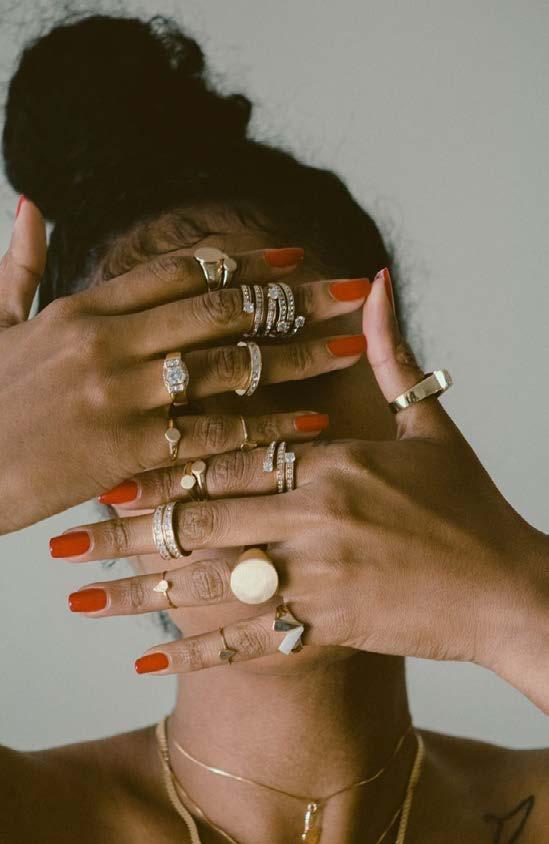
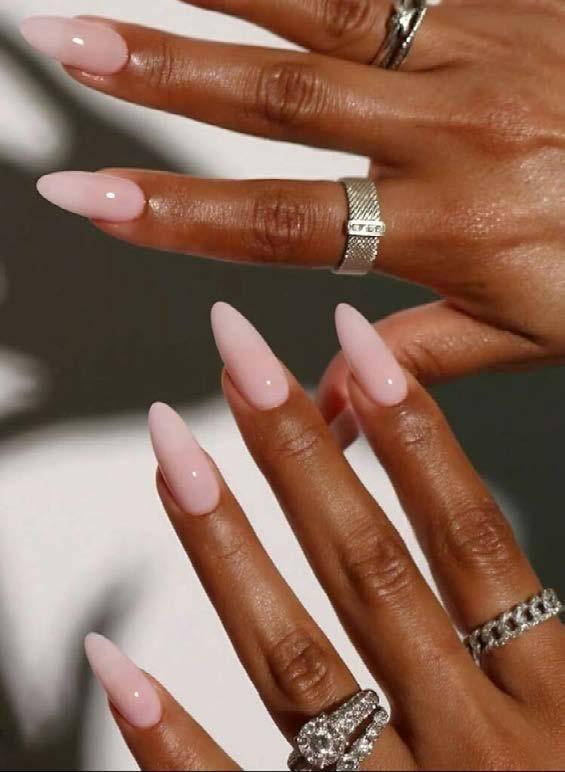
Letting your nails rest doesn’t mean they have to look boring. Instead, you can use the break to pamper them. You can moisturise with cuticle oil, massage your hands, or even apply strengthening treatments. This downtime helps restore the natural shine of your nails and keeps your cuticles soft and healthy.
Your nails may be small, but they’re an important part of your overall beauty routine. Just like your body needs rest, your nails also need breaks to stay strong, healthy, and beautiful. So, the next time you’re tempted to reapply polish immediately after taking one off, consider giving your nails a short holiday.
BY DORCAS AKINTOYE
Nowadays, designing your house involves more than just having it look good. It has to do with how you feel about your surroundings. This is the role of the dopamine décor trend. The goal of this design approach is to create environments that immediately make you feel good, cheerful, and uplifted. This style, which takes its name from dopamine, the “feel-good” neurotransmitter in our brains, emphasises the use of colours, textures, and personal objects to create a joyful and lively atmosphere in your house. Dopamine décor is about surrounding yourself with things that bring you joy, whether you want to make changes to your entire house or simply add a few cheerful accents. Here are five simple methods to incorporate this style into your home.
USE BRIGHT, HAPPY COLOURS
Vibrant colours are the best choice for dopamine-boosting décor, as they have the power to alter our mood significantly. When we say bright colours, think about bright pinks, sky blues, warm oranges, and cheerful yellows. These hues may add a sense of joy and vitality to any space. It’s not necessary to paint the entire house; you may start small with vibrant wall art, rugs, or cushions. Choosing colours that bring your place to life and make you happy is essential.
ADD
The goal of dopamine décor is to fill your space with things that are important to you, making your home reflect who you are. Display pictures from memorable travels, hang heartwarming artwork, or display unique keepsakes and souvenirs. These unique accents add a sense of specialness and bring back happy memories. Filling your home with things that bring you joy is the goal.
USE FUN AND UNIQUE FURNITURE
Dopamine décor loves things that are a little different. Think about chairs with fun shapes, colourful lamps, or playful wall art. Unique pieces, such as a bright, wavy mirror or a coffee table with a bold design, can make your home feel fun and full of life. Don’t be afraid to try different shapes and styles; the more unique, the better. The idea is to create a space that shows your personality.
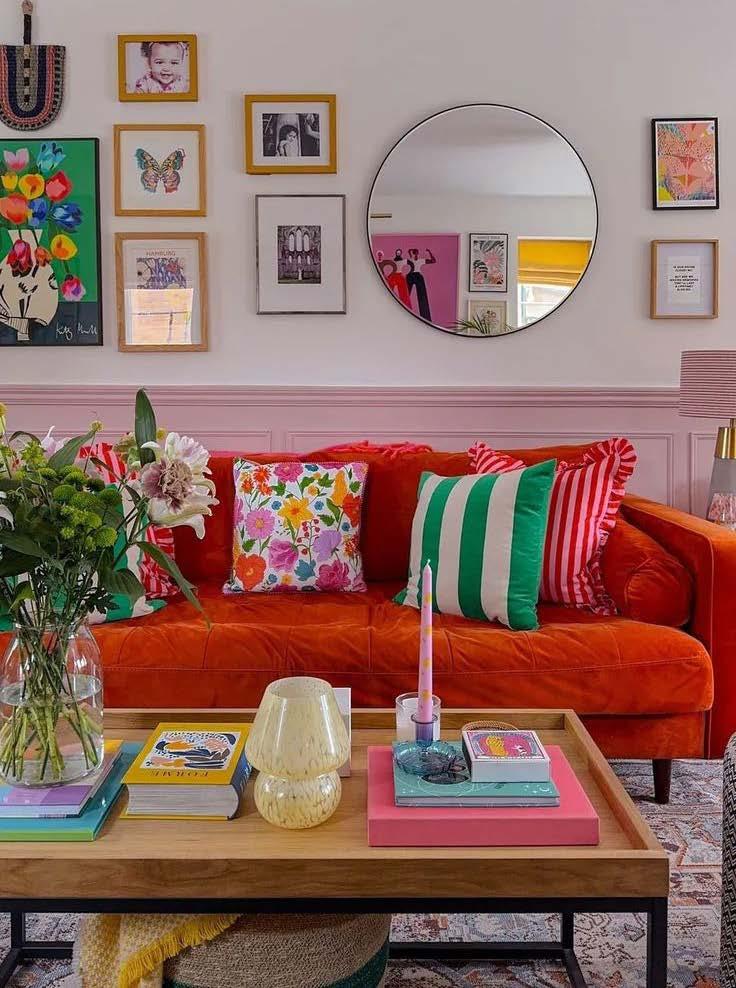
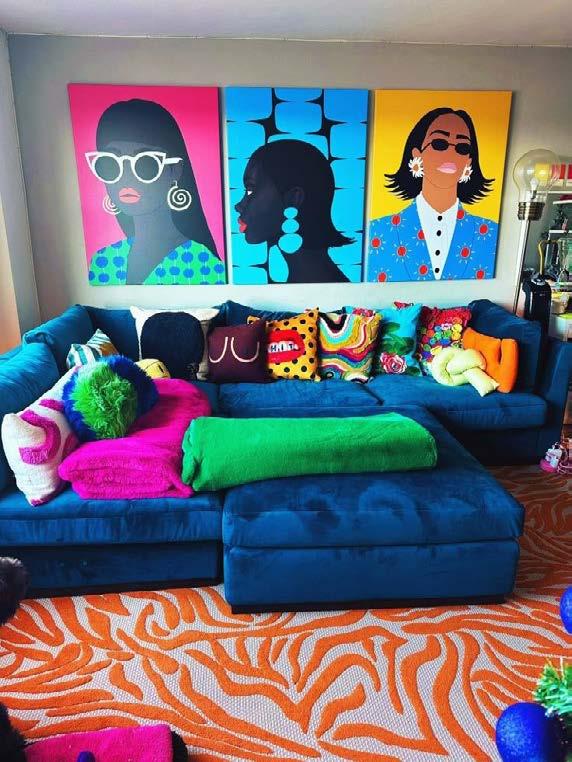

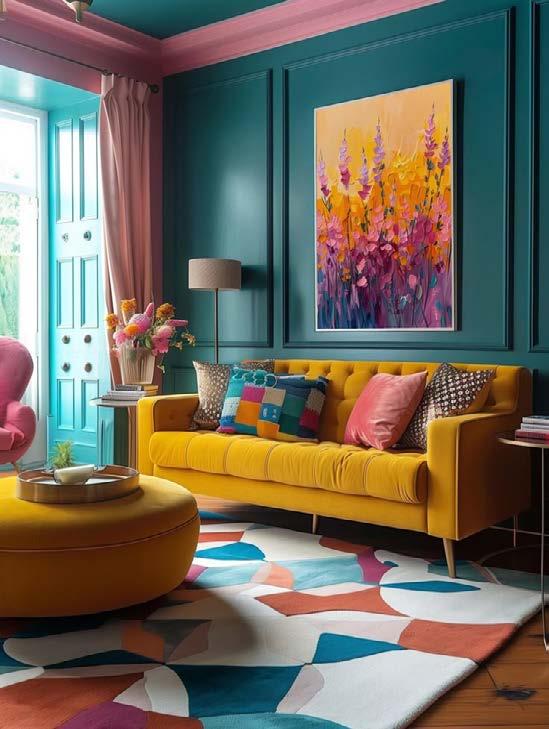
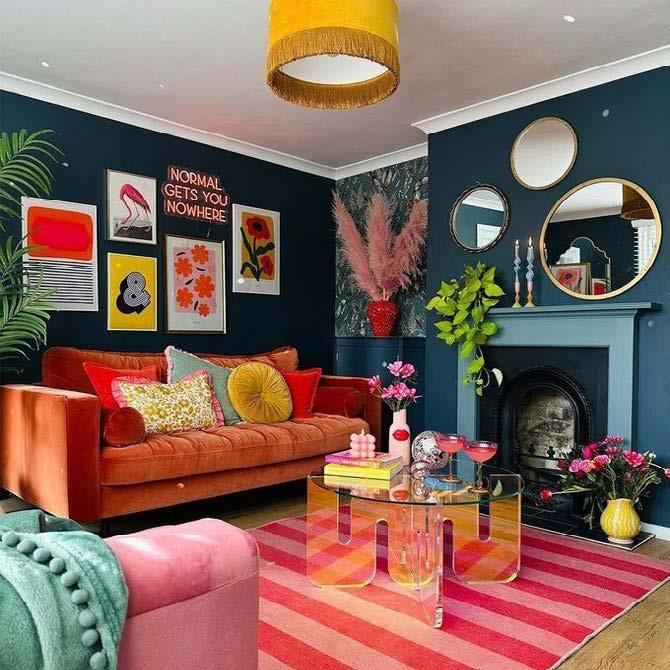
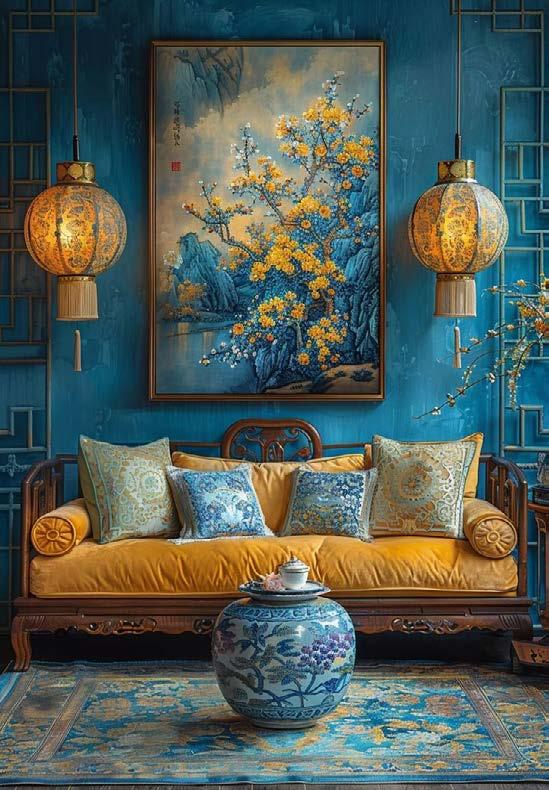
Having fun is the main goal of dopamine décor, and combining patterns is a terrific method to achieve it. If done correctly, stripes, polka dots, florals, and forms can all blend together. To avoid a cluttered appearance, it’s important to select patterns with complementary hues. For instance, if the colours of the striped pillows and the vivid floral rug are somewhat similar, they can look fantastic together. Pattern mixing makes your space feel fun and exciting.
PLAY WITH DIFFERENT TEXTURES
Mixing a variety of textures can add interest and cosiness to your house. Consider soft, fluffy pillows with shiny tables, or a velvet couch with a woven rug. Adding a variety of textures to your room gives it warmth and prevents it from feeling flat. Additionally, you can combine materials such as cloth, metal, wood, and glass to achieve a pleasing balance. You will feel more content in your home if it feels wonderful to touch.
The dopamine décor trend is all about making your home feel as good as it looks. There are no strict rules; it’s all about what makes you feel good. So go ahead and decorate your home in a way that makes you smile every day.

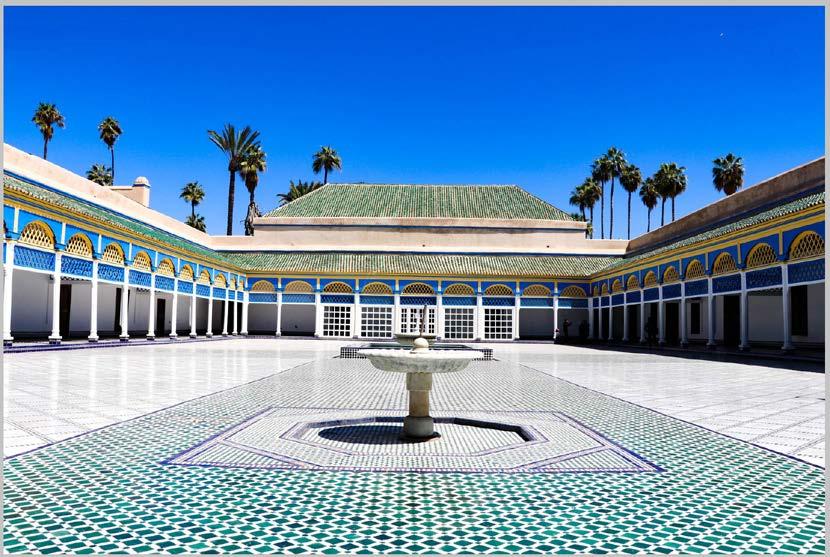
Marrakech, Morocco: The Red City of Wonders
Marrakech is a cultural playground, famous for its medina, souks, and enchanting palaces. The city is an explosion of colours, scents, and sounds, where snake charmers, storytellers, and artisans fill Jemaa el-Fnaa square.
From the intricate tiles of the Bahia Palace to the spiritual calm of Majorelle Gardens, Marrakech fuses North African heritage with global charm.
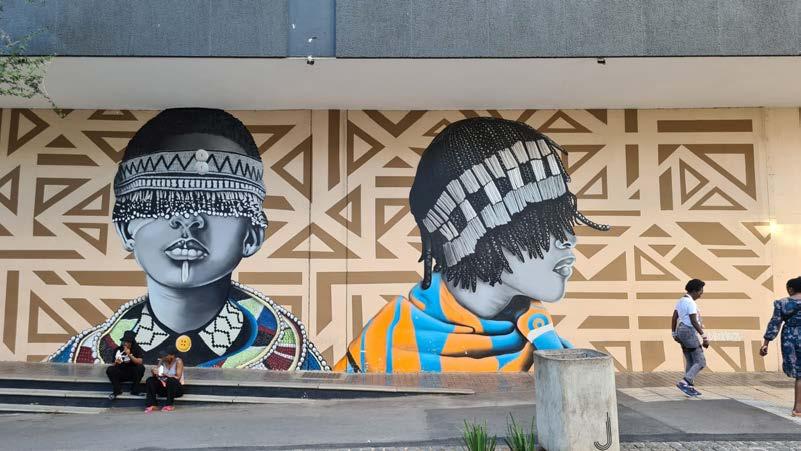
Johannesburg, South Africa: Africa’s Art Powerhouse
Jo’burg or Jozi as locals call it, has reinvented itself as the continent’s art and cultural powerhouse. The Maboneng Precinct is packed with galleries, street art, and buzzing restaurants, while Soweto remains the heartbeat of political and cultural history. Add in cutting-edge fashion and a lively nightlife, and Johannesburg easily earns its spot as a cultural capital.
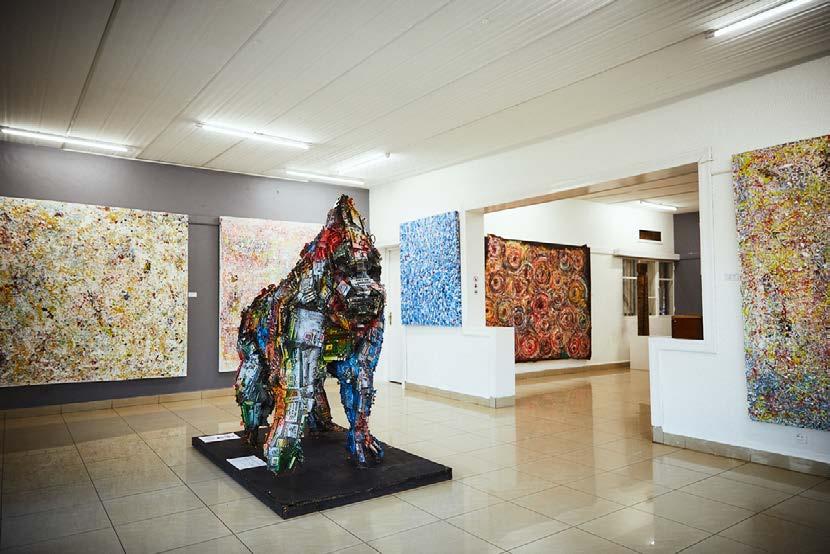
Rwanda: The Clean And Creative Hub
Kigali has emerged as one of Africa’s most dynamic and forward-looking cities. Known for its clean streets and organised charm, it’s also becoming a vibrant cultural destination. The Inema Arts Center and local craft markets showcase Rwandan creativity, while chic cafés highlight the country’s world-class coffee culture. Kigali is a city that blends resilience, innovation, and artistry, making it a cultural gem that’s as inspiring as it is welcoming.

Dakar pulses with rhythm and resistance. Known for its dynamic music scene, from mbalax to hip-hop, it’s also a hub of contemporary African art. The city’s Dak’Art Biennale draws global artists, while the African Renaissance Monument stands tall as a symbol of pride. Dakar’s coastal charm, vibrant street murals, and rich traditional wrestling culture make it an unforgettable destination.
BY JOHNSON CHUKWUEKE
Africa is more than just safaris and breathtaking landscapes; it’s a continent buzzing with creativity, innovation, and cultural richness. Across the map, cities are rising as cultural capitals, where art, fashion, music, food, and history converge to create destinations that captivate travellers. If you’re looking for places that embody the soul of Africa while embracing modern flair, here are five cities that truly shine.
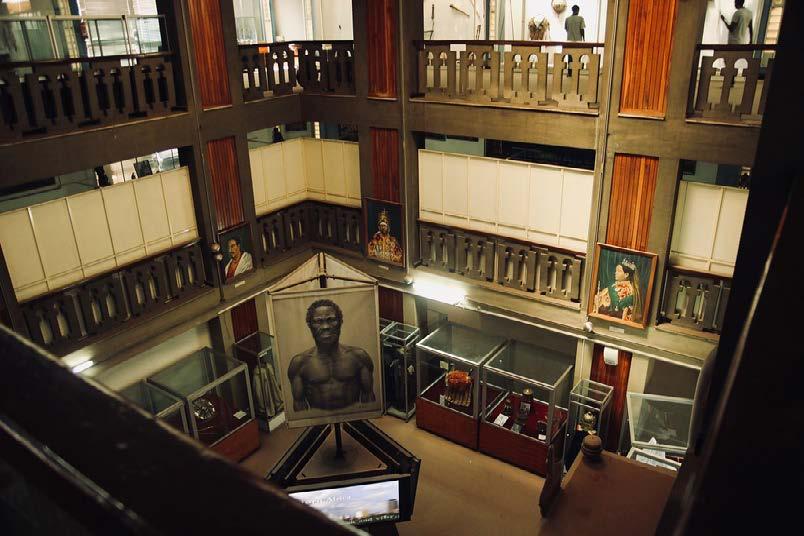
Ethiopia:
Addis Ababa, the diplomatic capital of Africa, blends deep traditions with modern flair. Home to the African Union, it’s also the heart of Ethiopia’s music, coffee, and culinary culture. The city’s museums, such as the National Museum of Ethiopia, house “Lucy,” one of humanity’s oldest known ancestors. Addis is a city that bridges the past and present, giving travellers an authentic taste of Africa’s resilience.
From the souks of Marrakech to the beaches of Dakar, Africa’s cultural capitals prove that this continent is as diverse as it is dazzling. These cities don’t just attract tourists; they inspire, transform, and tell stories that resonate worldwide. If you’re searching for a journey that touches both heart and soul, Africa’s cultural spotlight is waiting.

Iwoke up that morning with a dull ache in my stomach and my emotions all over the place. It wasn’t new. I had come to recognise the signs; that was my body’s way of announcing ovulation. Still, every time it came, I wished I could skip the whole menstrual cycle drama. The mood swings, the cravings, the constant overthinking, it was exhausting. I often caught myself wondering if it was even necessary at all.
Yet, I couldn’t help but laugh when I remembered that one time in June when I begged for what I usually hated the most: my period. I had never longed for it so desperately as I did that month.
June was wild. Steven and I had just started dating, and it felt like we couldn’t get enough of each other.
We were always in each other’s faces, doing all the silly, dirty, fun things new lovers do; sharing food, stealing kisses in public, sending naughty texts, sneaking quick touches, and laughing about nothing. It was intoxicating.
Then there was that particular night after we came back from the club. We were both tipsy, high on alcohol and high on each other. He was already a good lover, but when he was tipsy, he turned into something else entirely: rougher, hungrier, wilder. That night, I knew I was in for it.
The moment we closed the door, we were on each other.
The kissing was desperate, like we were breathing each other in.
I could feel the heat building between us, and when he finally slid into me, it felt different. My body screamed with pleasure,
the sensation so sharp and new that I gave in completely. There’s a way you just know when he releases inside you; I felt it. And instead of panicking in the moment, I allowed myself to enjoy it. The cold rush, the intensity, we both came hard.
It wasn’t until afterwards, when he rolled over to sleep, that reality struck me. We had just had unprotected sex. I tried to tell him, but he waved me off, mumbling something about being tired. The next morning, I bought a contraceptive and used it. Steven reassured me that I’d be fine, that there was nothing to worry about, and that even if the worst happened, we would handle it together. Still, I told him we needed to avoid sex for a
while. He didn’t like the idea, but I insisted. From that day, I waited anxiously for my period. The supposed date came, and nothing happened. No spotting, no cramps, nothing. My fear grew. I didn’t want to jump to conclusions, but the thought of pregnancy haunted me. My dreams, my plans, everything felt like it was about to scatter. And to be honest, I wasn’t even sure I wanted Steven to be the father of my child.
Two weeks later, I couldn’t take it anymore. I told Steven. By then, I had already convinced myself I was pregnant, even without a test. His reaction shocked me.
“Do the needful,” he said casually. “I’ll send you some money.”
At first, I didn’t understand. Then I asked, “What do you mean?”
Without looking at me, he replied, “Let’s have an abortion. I can’t be a father now.”
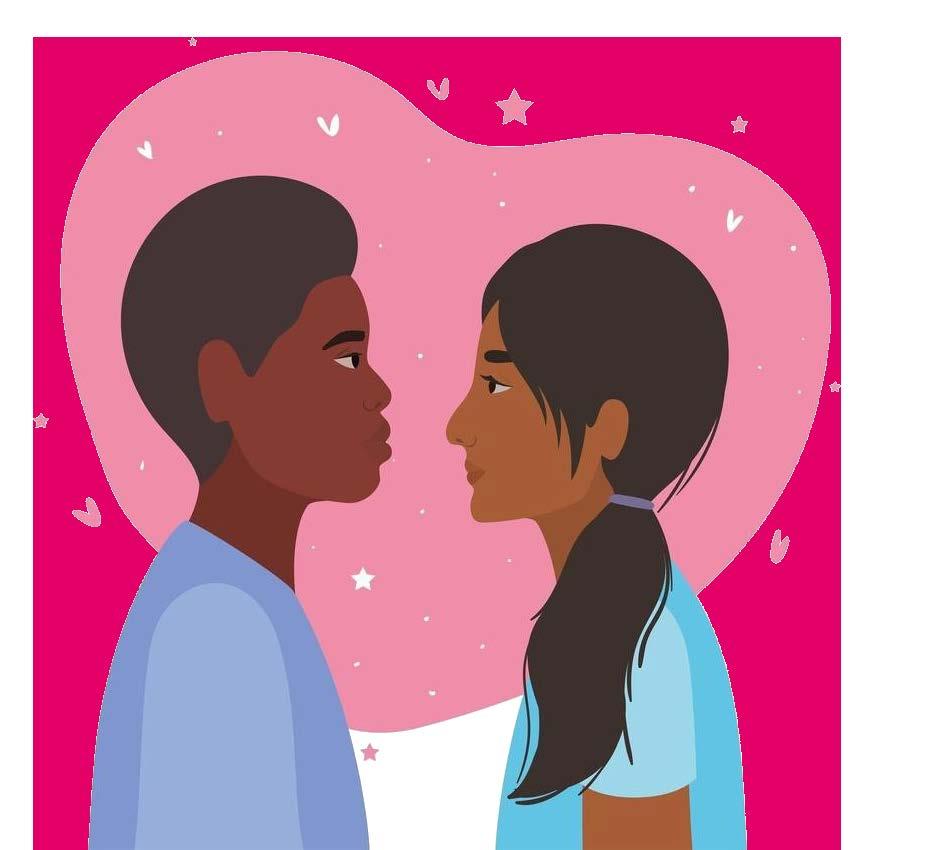
I stared at him, speechless. This was the same man who had once said, “We’ll handle it together.” My heart sank. Of course, I wasn’t ready for a baby either, but I expected more from him, at least some encouragement. At that moment, I knew I was with the wrong person. I left his house quietly, carrying a new kind of ache in my chest.
On my way home, something told me to confirm. I stopped at the hospital for a test. The doctor smiled as he explained that my body was only reacting to hormones. I wasn’t pregnant. Relief washed over me so strongly that I barely heard the rest of what he said.
I didn’t bother telling Steven. I blocked him everywhere and moved on. That pregnancy scare taught me more than anything that sometimes life gives you a false alarm, so you can see people for who they truly are.
BY BOLUWATIFE ADESINA

Johnson gives the performance of his career in The Smashing Machine. He plays mixed martial arts (MMA) fighter Mark Kerr, and in the role, Johnson is a completely different person, worlds away from The Rock, his globedominating movie star persona, even if he still has that massively hulking, physically imposing physique. Underneath all those gigantic muscles, The Rock slips away, and he’s all Kerr.
But writer-director Benny Safdie, in his first movie without his brother and filmmaking partner Josh, works so hard to sand away the conventions of typical sports biopics that he’s left with what feels more like a documentary than a big-screen drama.
The wild highs and lows of Hollywood storytelling are evened out, and in the process, The Smashing Machine loses its emotional sweep, not to mention its focus. You’re never quite sure if you’re watching a story about Kerr, about his topsy-turvy relationship with his girlfriend Dawn (Emily Blunt), about his friendship with fellow fighter Mark Coleman (Ryan Bader), or about the rise of the Ultimate Fighting Championship (UFC) itself.
Kerr is a pioneering MMA fighter who hails from Toledo, Ohio. We first meet him in 1997 when he’s competing in a freestyle wrestling tournament in São Paulo, Brazil, fighting his in-ring foes with a simple guiding principle: “Am I going to hurt him before he hurts me?” Usually, it’s the former.
Kerr gets so good at dominating his opponents that losing becomes unfathomable to him, so much so that when he finally does lose a match, he’s shattered to his core. In a locker room breakdown after a fight, he buries his head in his hands and cries
uncontrollably, openly weeping with no mechanism to stop the flow of tears. A lesser portrait of a fighter would have him destroying the locker room, throwing chairs and threatening bystanders. But this loss is so destructive to Kerr at his core that all he can do is cry.
Kerr’s life begins to crumble with the loss of his identity as the unbeatable, unbreakable smashing machine, and he falls into a haze of opiate addiction, staring blankly into space in the living room of the Arizona home he shares with Dawn. This complicates their already tumultuous relationship, as she has her own emotional baggage and neediness issues. When he eventually sobers up, she continues partying, furthering the gap between them.
Meanwhile, an in-ring comeback looms, and Kerr seems to be on a collision course with his buddy, Coleman. Or maybe that’s what decades of Hollywood storytelling have groomed us to believe: Safdie, who also edited the film, is constantly veering away from expectations in the narrative. The problem is his zags don’t lead us down more interesting paths than the zigs would have. He’s uprooting our expectations, but not leading us anywhere new or unexpected as an alternative.
Within this framework, Johnson is magnificent. His charm levels have always been off the charts, with a magical smile that could light up a city skyline. But here he’s calling on something different, something from within: Kerr is friendly but reserved, speaking in deliberate rhythms, and he has a quiet softness to him where Johnson has hyper charisma running through his veins. It’s a real transformation for Johnson, who hasn’t even hinted at this kind of depth or character work in his 20-plus years as a big screen star (he came closest in Pain & Gain), and it could be a reset for him, if he’s looking for one.
For Safdie, who, along with his brother, made a series of unnerving, anxiety-riddled showcases in tension (see Good Time and Uncut Gems), The Smashing Machine is a step backwards. It has the grainy look of a forgotten indie and a few choice needle drops — an explosive fight between Kerr and Blunt’s character, set to the breakdown in Bruce Springsteen’s Jungleland, is top-tier; but as a whole, it comes off oddly flat and shallow.
It’s fine if it’s not Rock and we’re not privy here to the manufactured highs of typical sports movies, but we’re not met with any greater themes or psychological depth in return. The Smashing Machine works so hard not to be certain things — a by-the-numbers biopic, a typical crowd-pleaser — that it never quite figures out what it’s trying to be, or what it is.
Rating:6/10
but this is the best performance The Rock has had in over 10 years, maybe ever really.

Scan this with your camera or click to access the playlist (Youtube Music)

Scan this with your camera or click to access the playlist (Spotify)
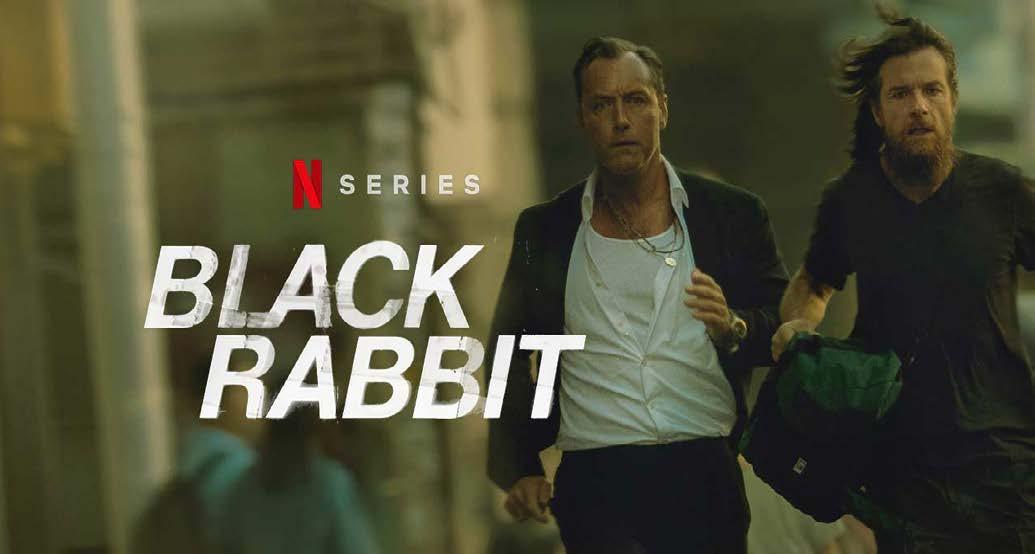
Jake seems to have it all. He’s rich, he’s handsome — he is played by Jude Law, after all — and he’s just opened the hottest new restaurant in New York City. His brother Vince, though, just came back into town with a mountain of gambling debt… and his problems are about to become Jake’s problems. It’s the kind of story we’ve seen a million times before, of course: the good brother and the bad brother. But Netflix’s new drama Black Rabbit somehow makes it work, powered by exceptionally strong performances by Law and Jason Bateman. Even when the story falters under the weight of too many twists, Law and Bateman do everything they can to hold it together.
Bateman plays against type here as Vince, a former drug addict with scraggly long hair and an unkempt beard who reaches out to his brother Jake after years of silence when he has nowhere else to turn. It’s a nice change of pace for Bateman, who usually plays straight-arrow dogooders like Arrested Development’s Michael Bluth, and he’s still charming enough that we can see how Vince has gotten away with his misdeeds for so long. But Jake doesn’t buy his brother’s BS for a second, and their scenes together are Black Rabbit at its best; as they bicker back and forth, we can sense the years of resentment bubbling just below the surface.
Co-created by Oscar-nominated screenwriter Zach Baylin (King Richard) and his wife Kate Susman, Black Rabbit plays like a mix of Bateman’s earlier Netflix drama Ozark and The Bear,
with an extra layer of gloom on top. (You might be asking: Can it get any gloomier than The Bear? Oh yes, it can!) The tone is persistently grim, in the style of Ozark, with dim, washedout lighting and bursts of gruesome violence. There’s a sinister, unsettling vibe throughout, never letting you get too comfortable. (Bateman directs several episodes himself, as does his Ozark co-star Laura Linney.)
Jake and Vince’s dynamic might feel like a cliché at first, but it gets more interesting than that. Vince actually had the vision for Jake’s restaurant to begin with, and he makes a sincere effort to reconnect with his tattoo artist daughter Gen, played by Odessa Young. Jake has major skeletons in his closet, too; he’s not exactly squeaky clean. Their desperation starts to climb,
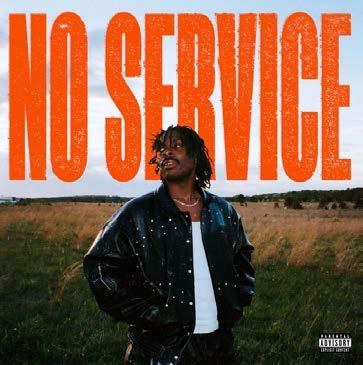

- 2:02PM IN LONDON (FREESTYLE)


Parcels - Sorry
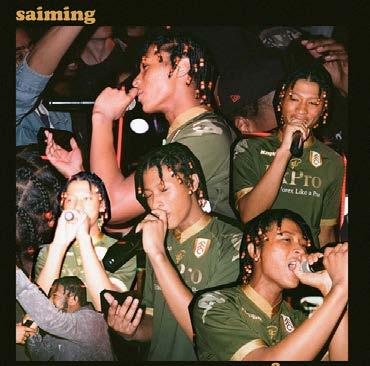
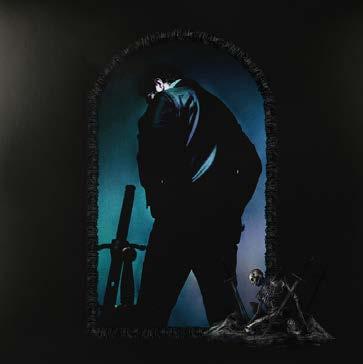
Bateman get even better. Oscar winner Troy Kotsur (CODA) also pops up as deaf crime boss Joe Mancuso, commanding the room without saying a word.
Black Rabbit does start out with one of my biggest pet peeves, though: a flash-forward to an exciting and dramatic moment in the future that is then put on pause so we can go back and fill in the backstory. (This highly annoying practice should be banned from all TV shows going forward.) It’s also plagued by confusing time jumps, clunky dialogue that tells rather than shows and plot complications that get too complicated, bordering on overkill. I kept coming back, though, to see more of Law and Bateman. Law expertly lets us see the pressure building behind Jake’s perfect veneer, and Bateman fleshes out Vince into much more than just a stereotypical sleaze. In their complicated relationship, we find the kind of nuance that the rest of Black Rabbit is lacking.
